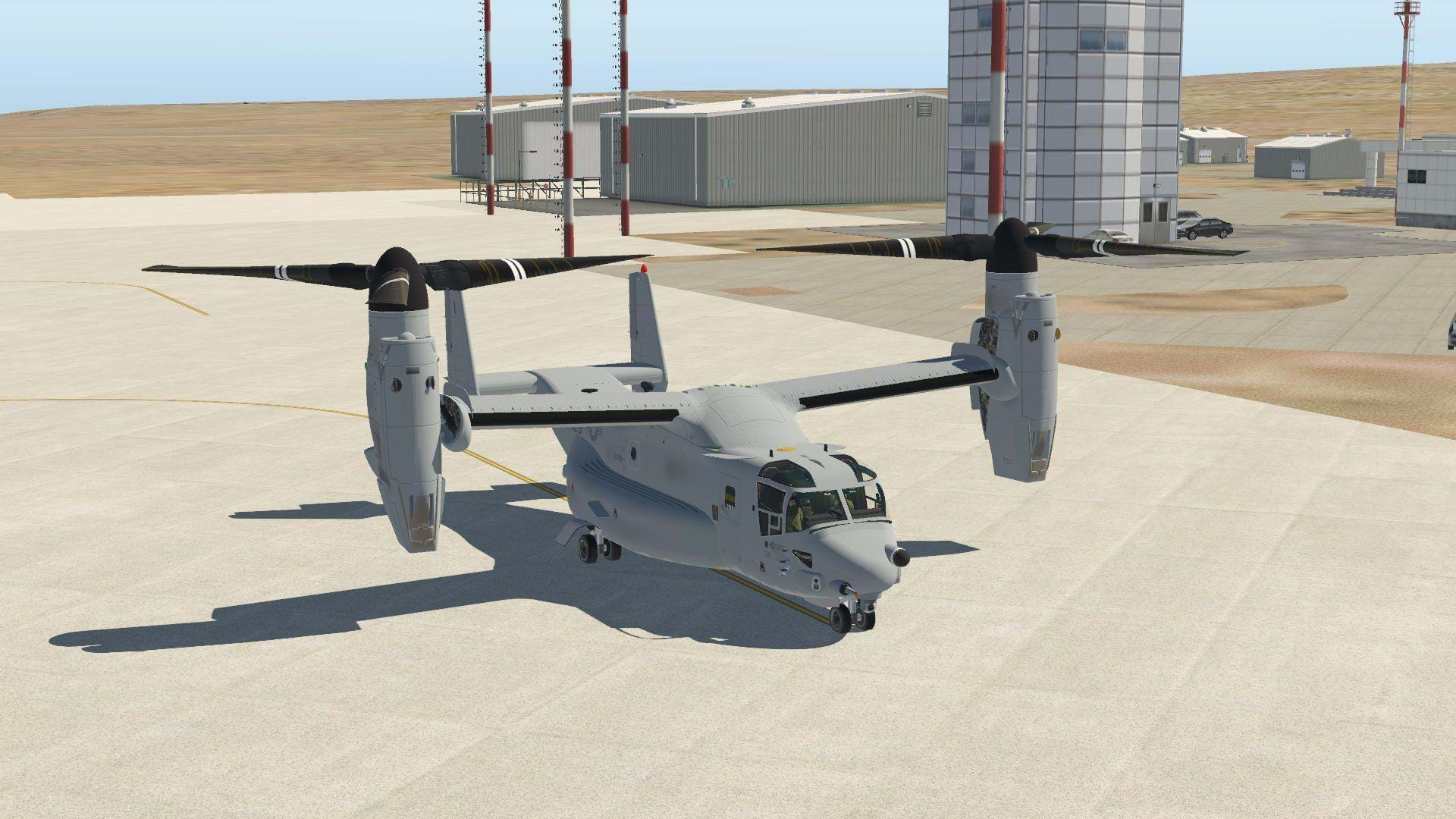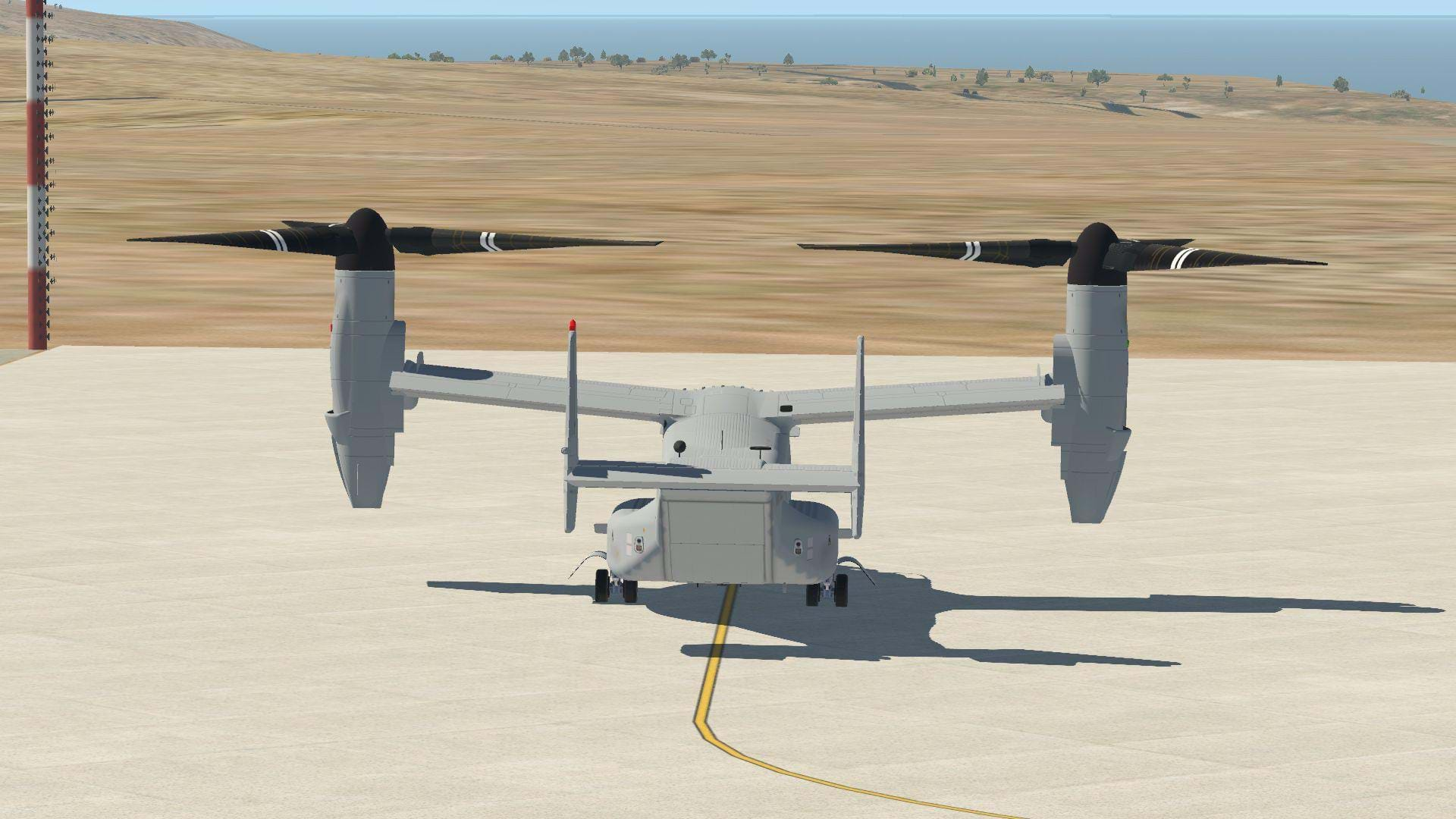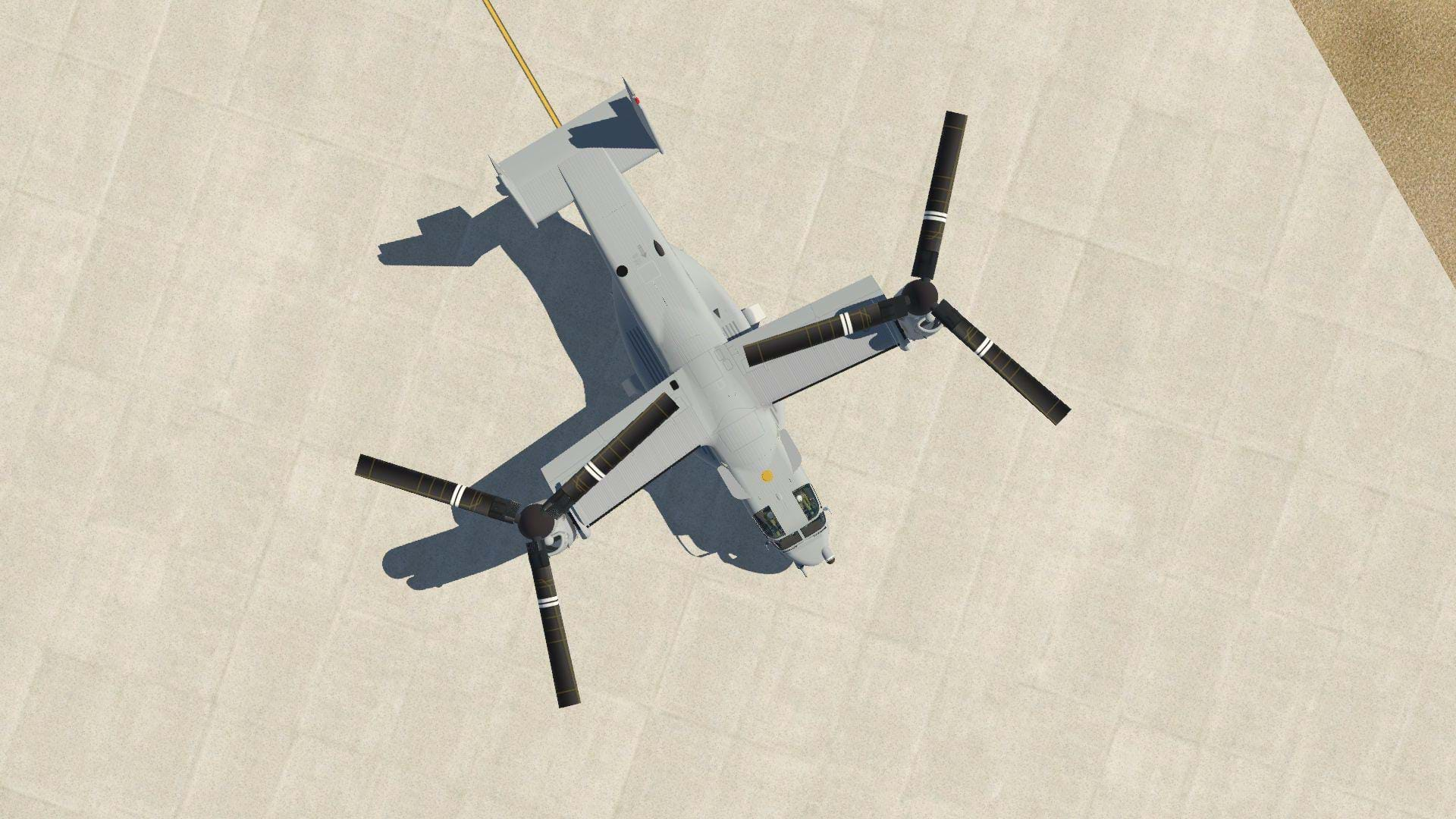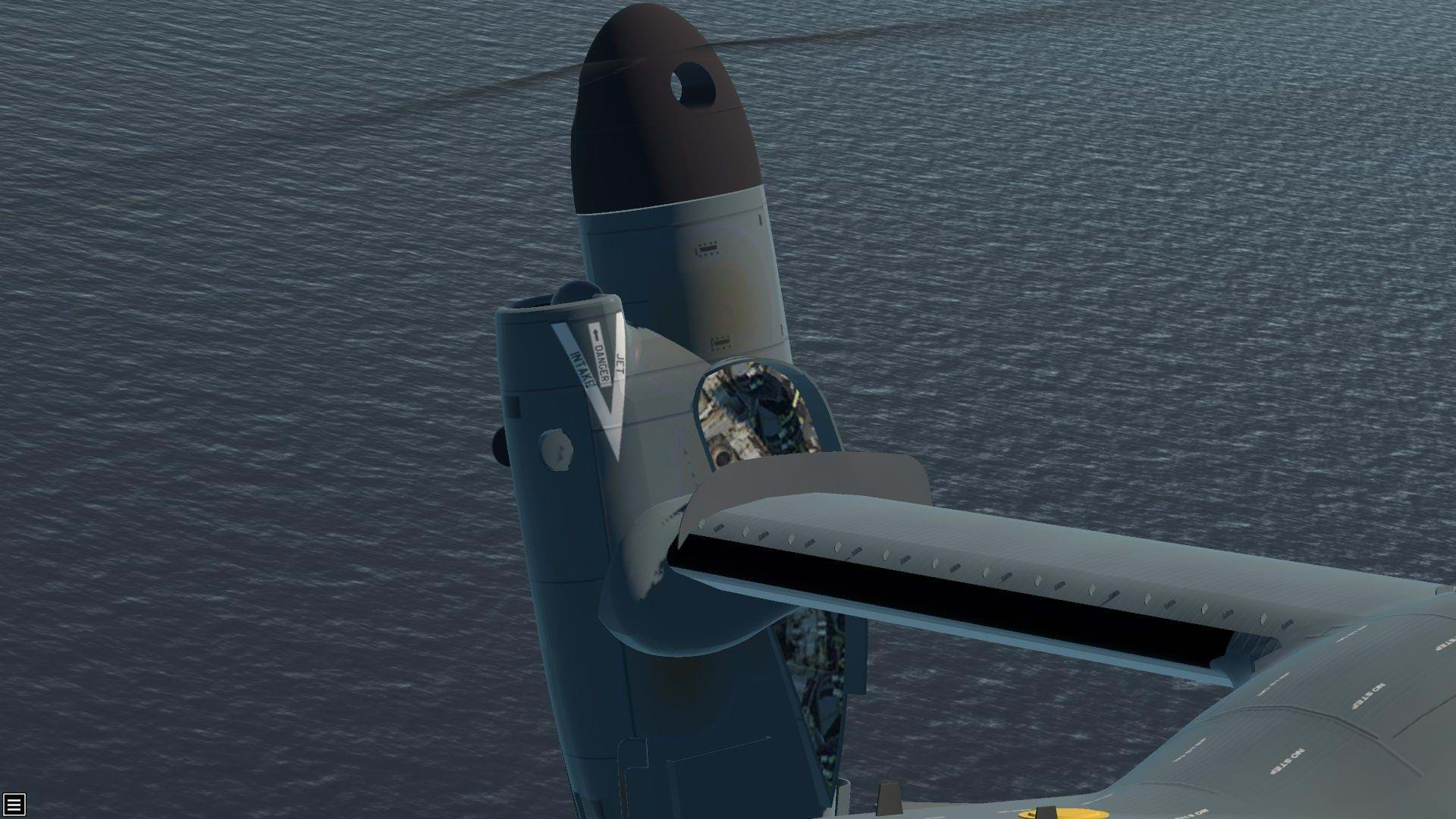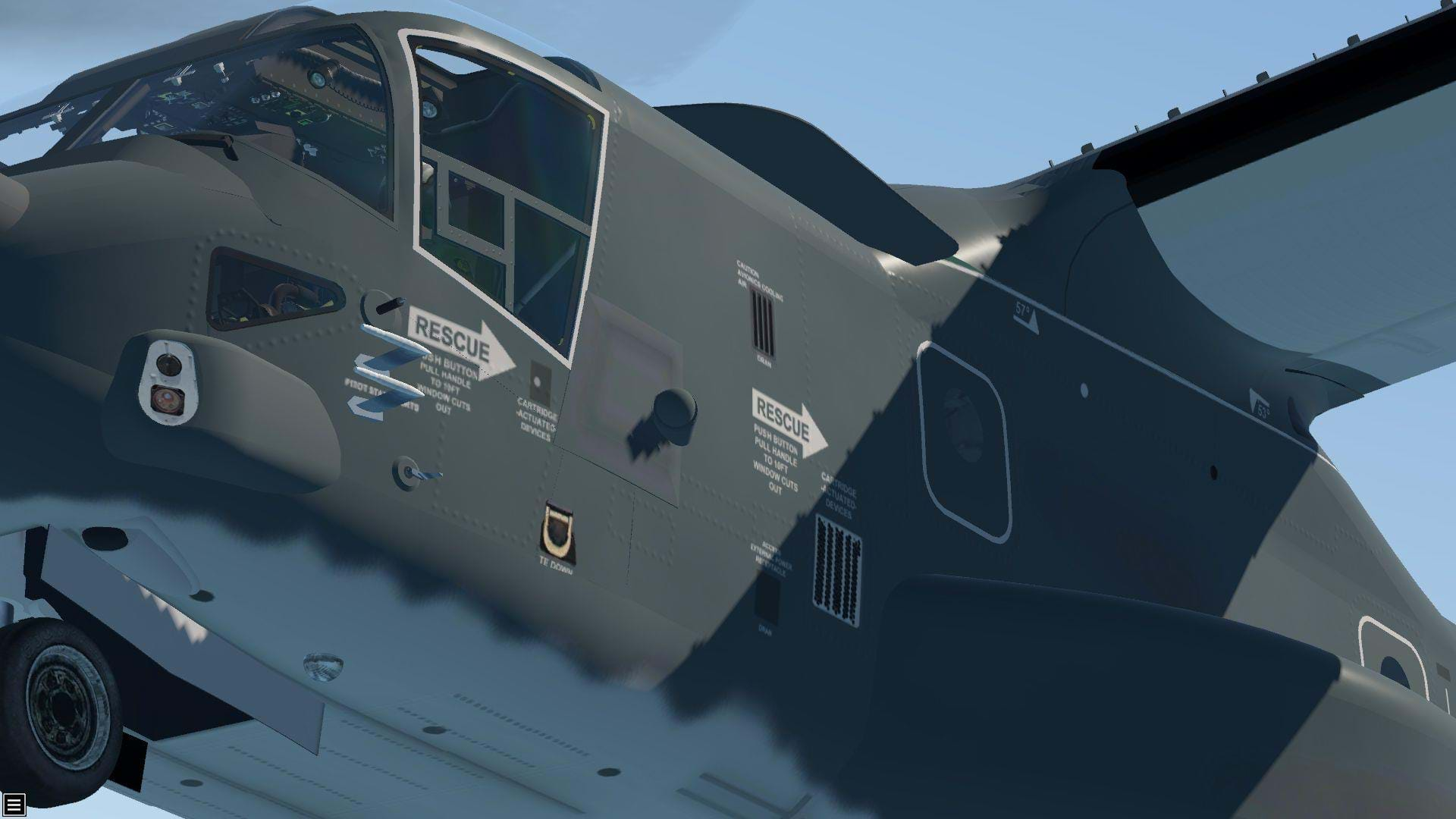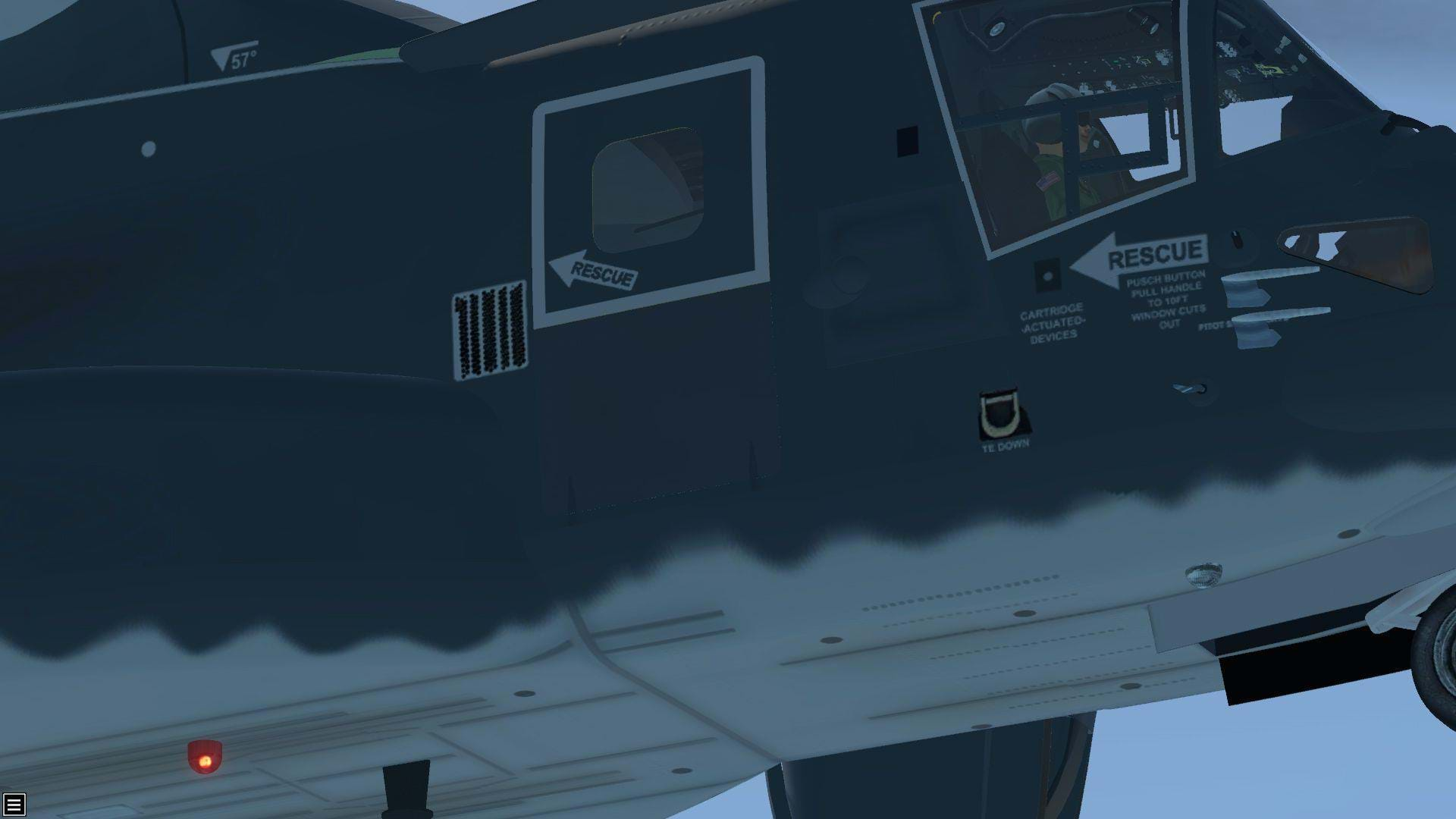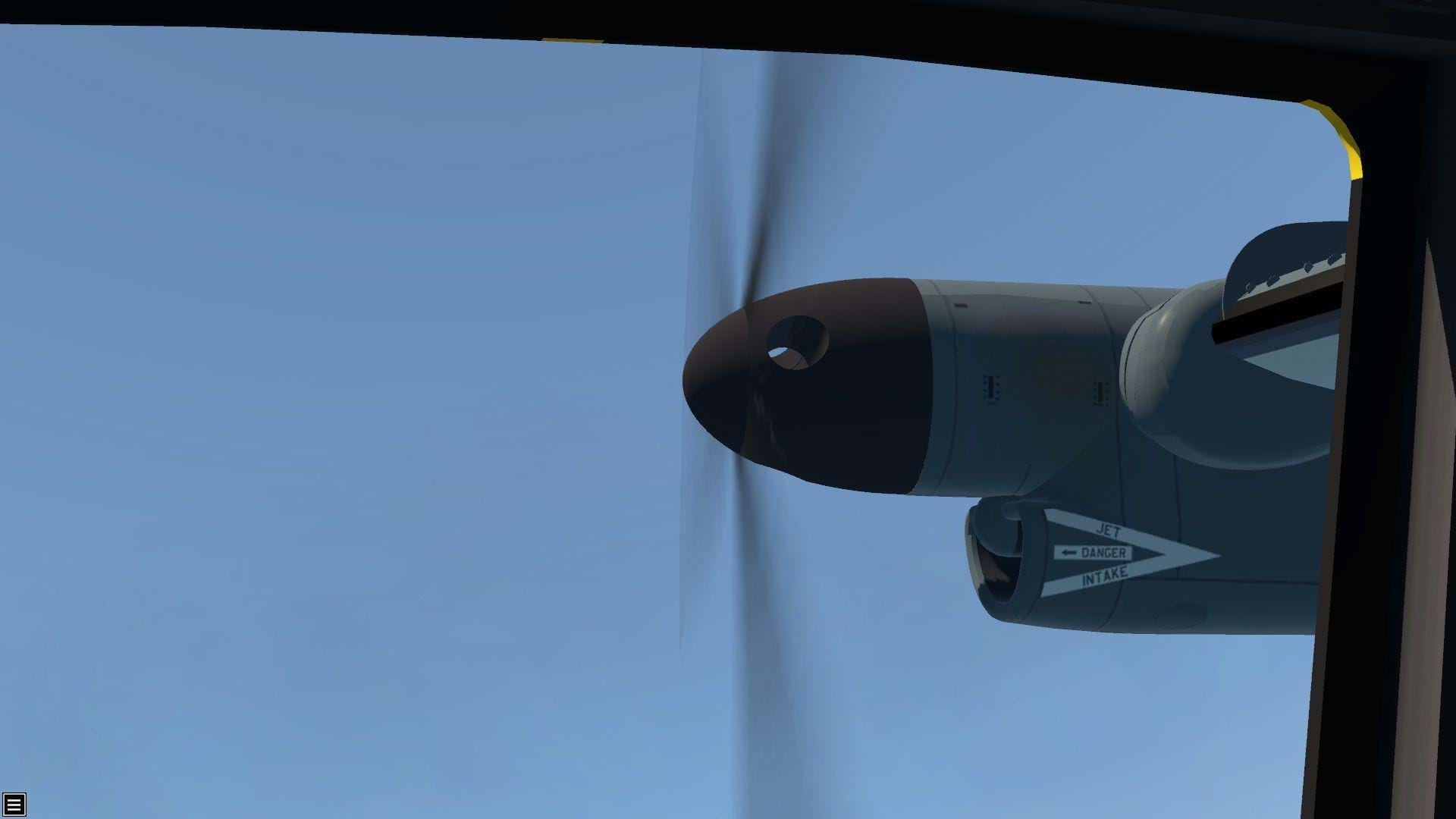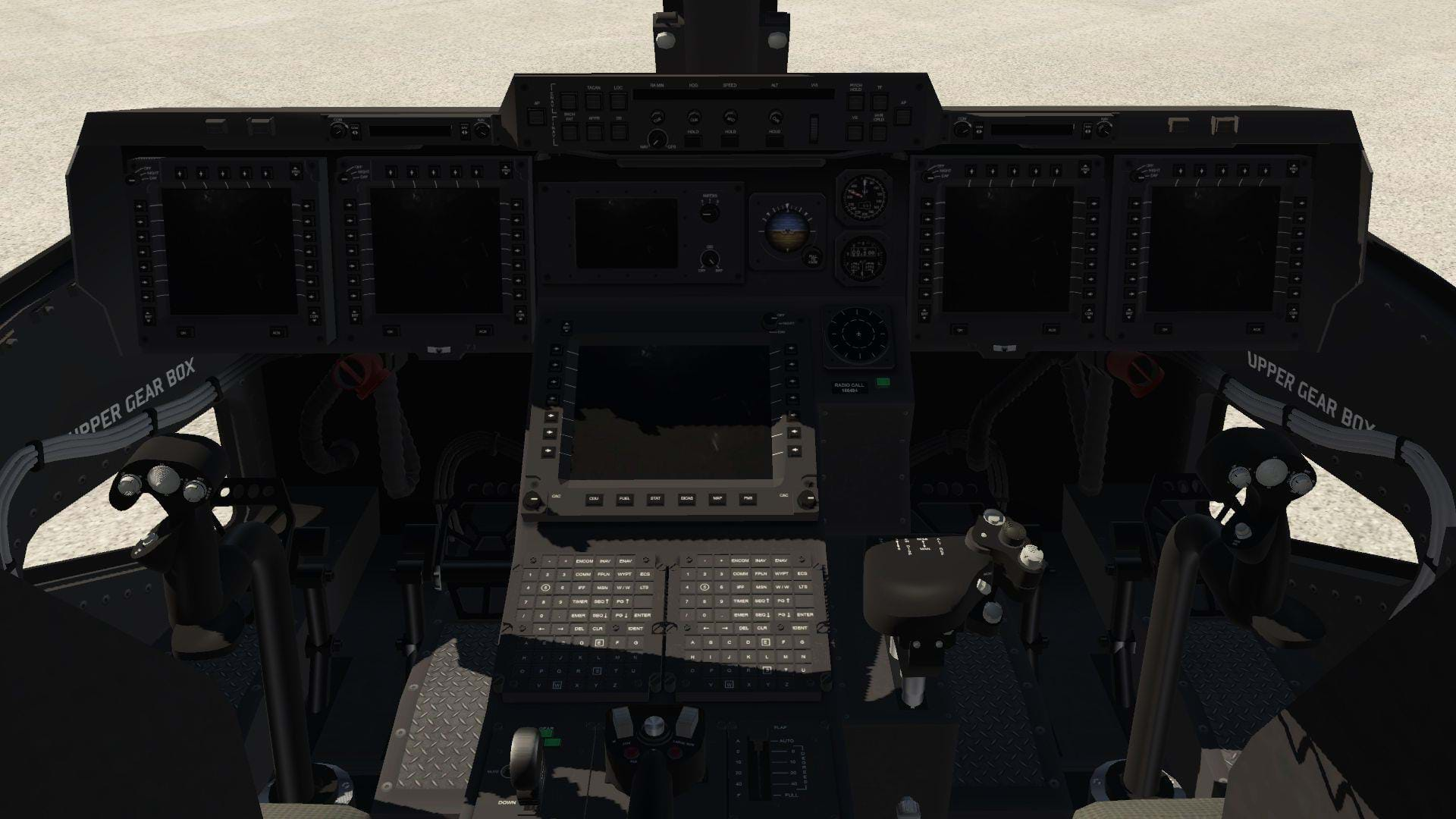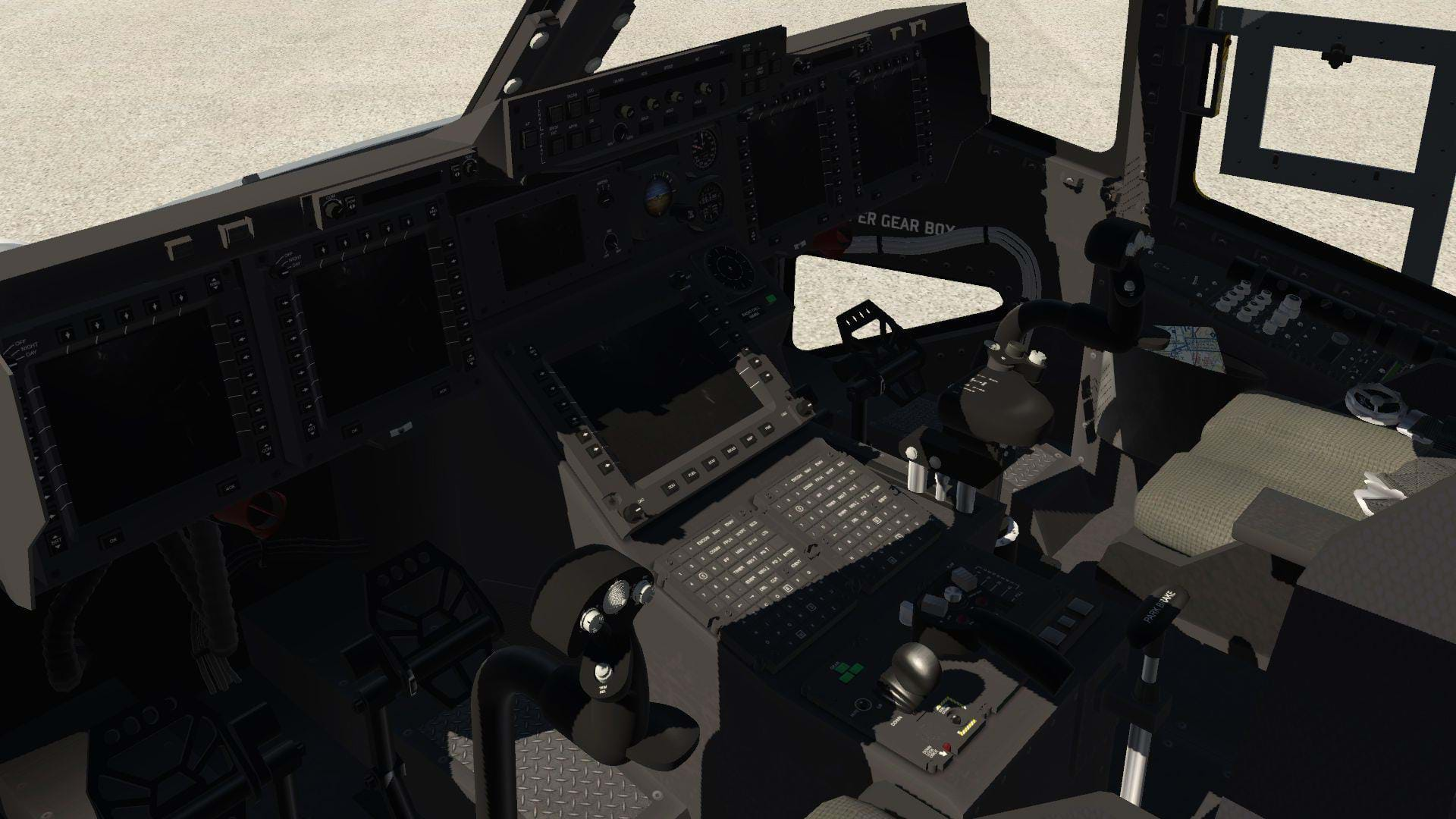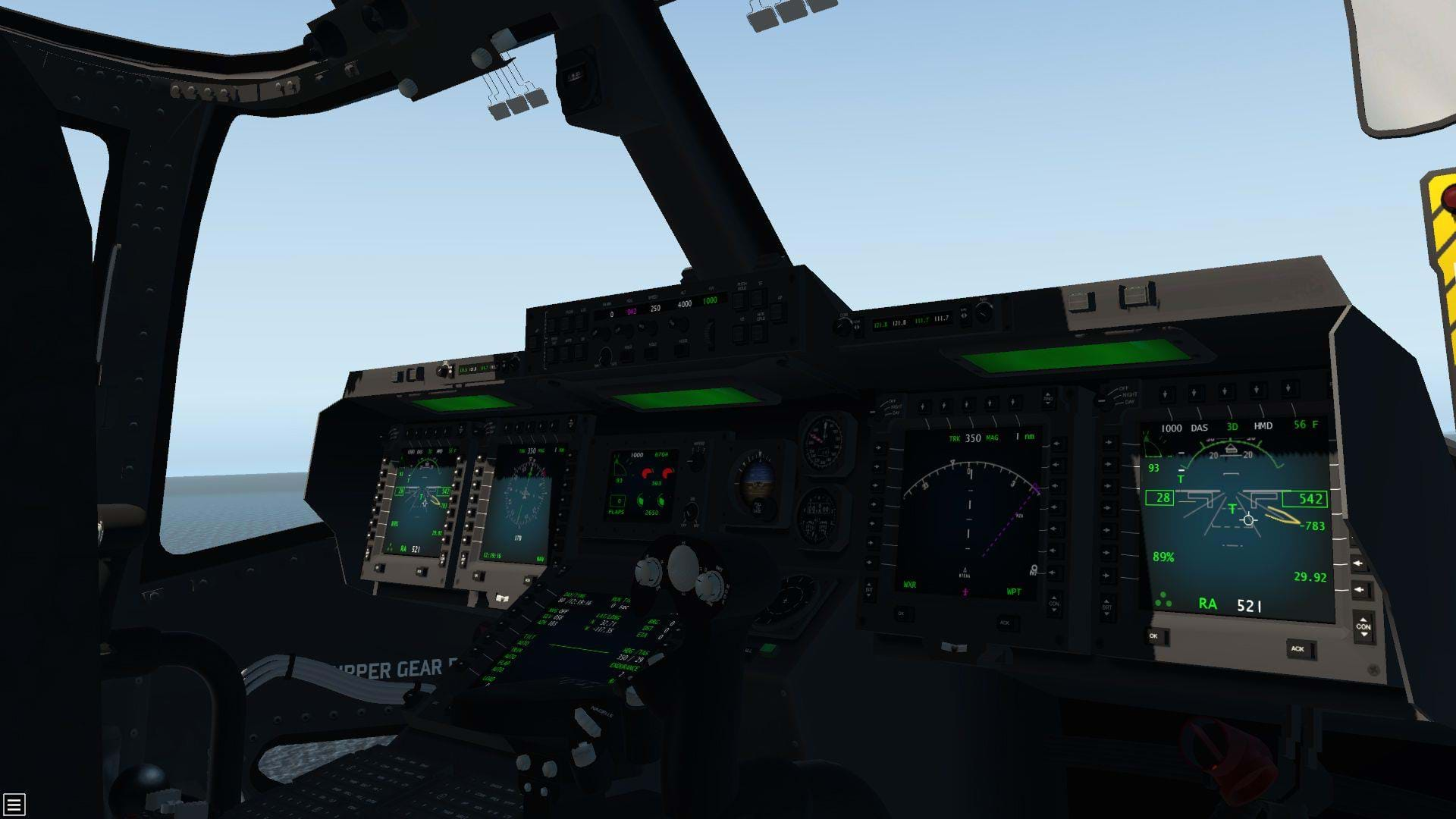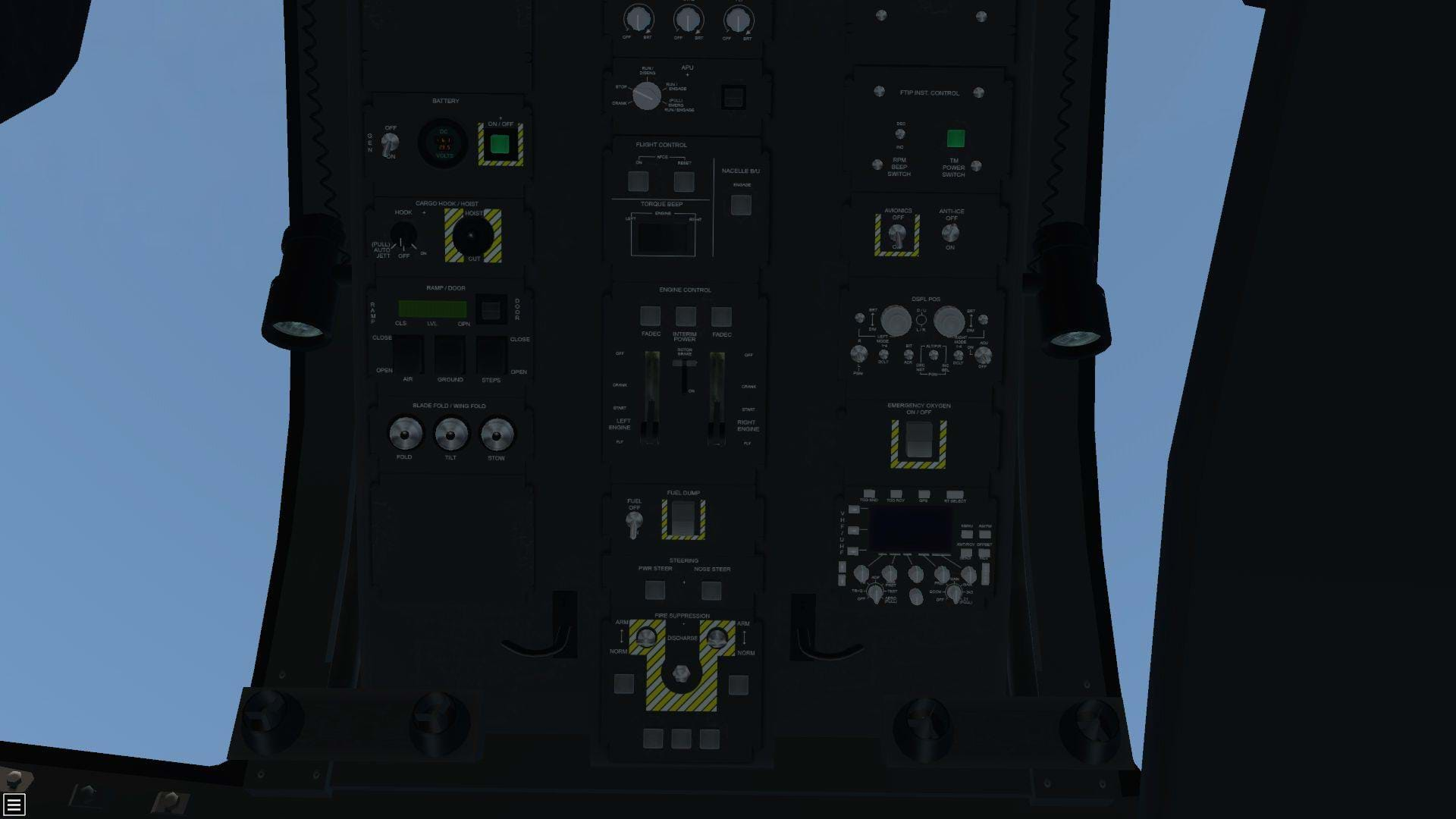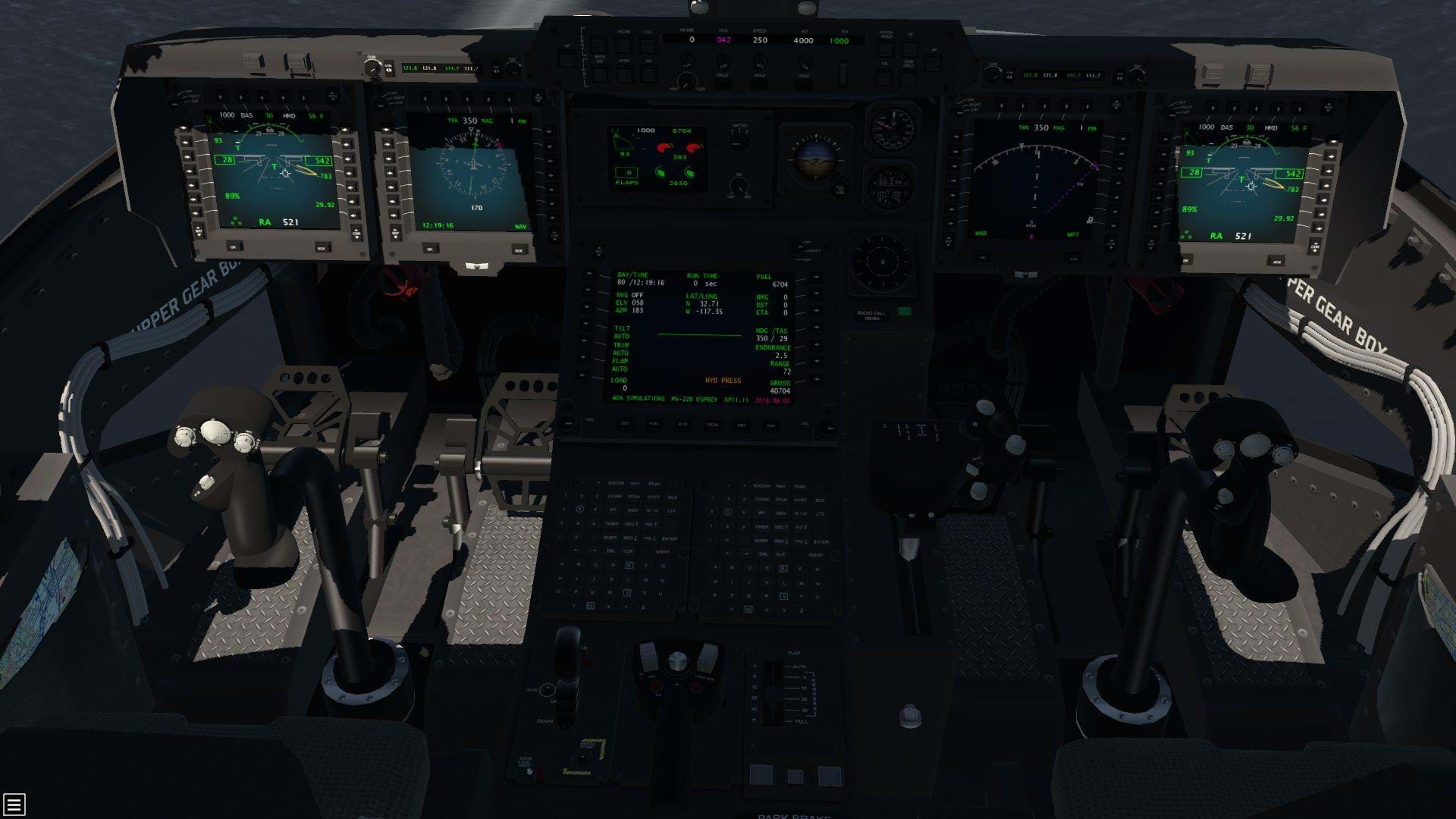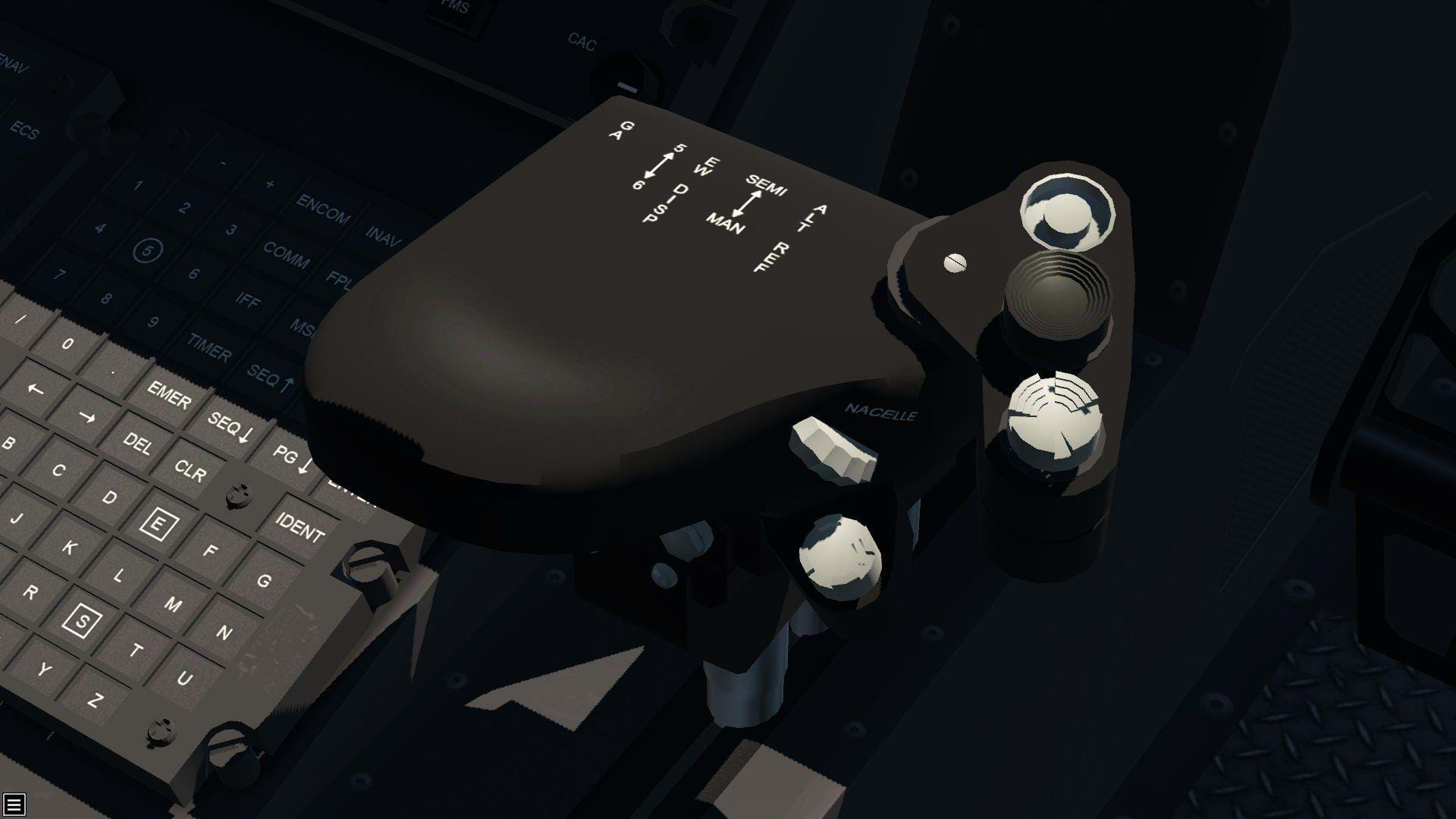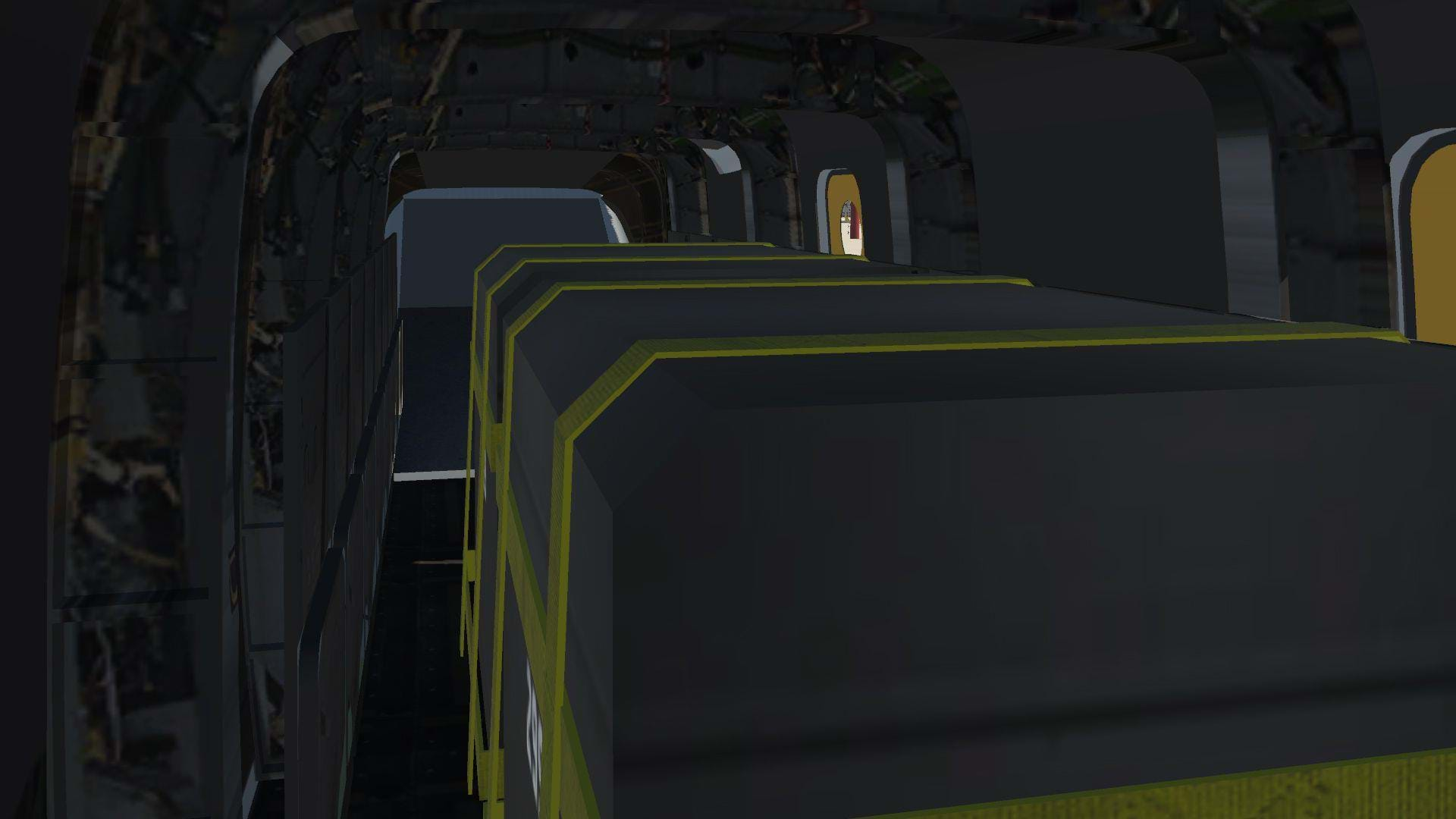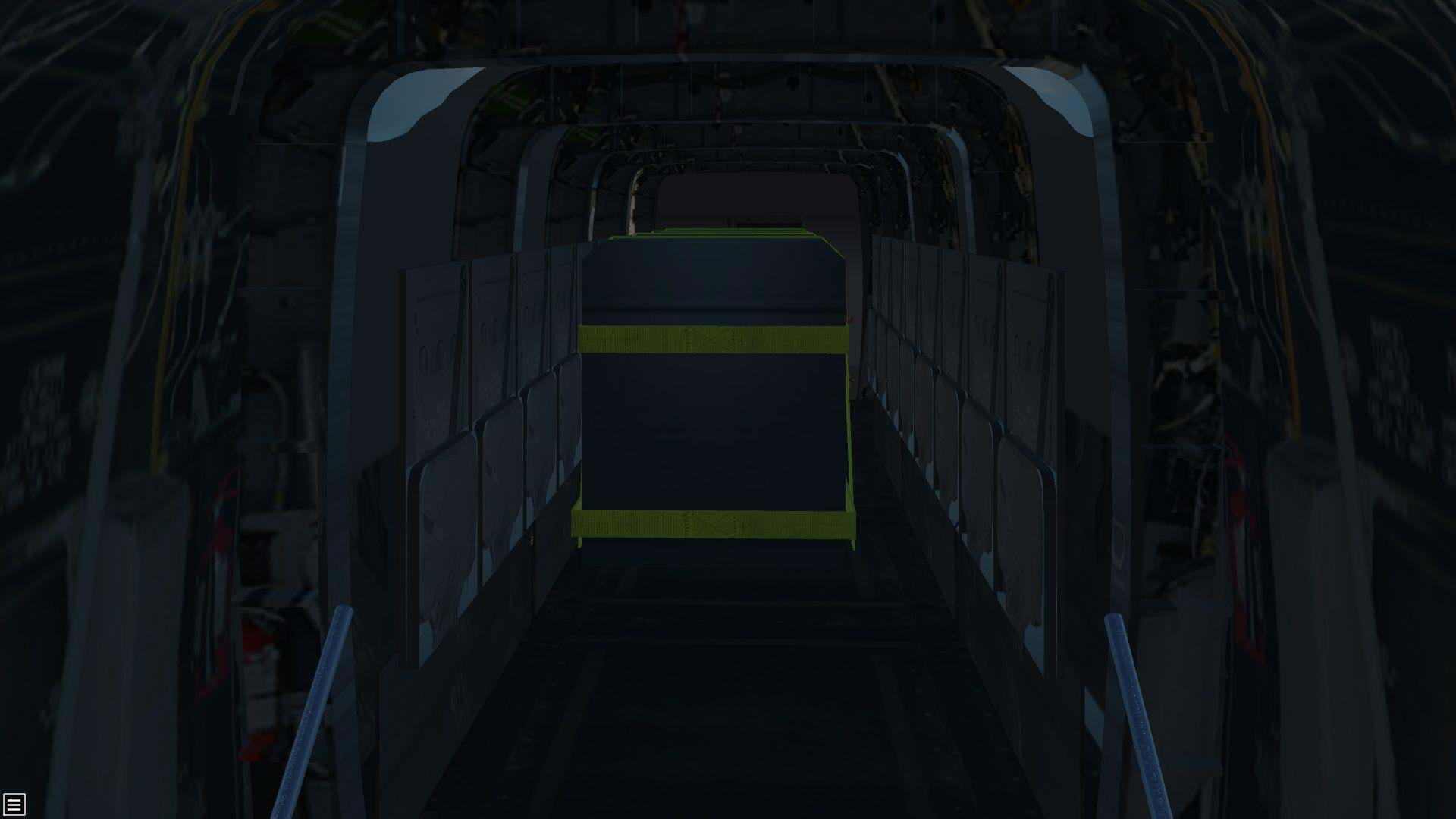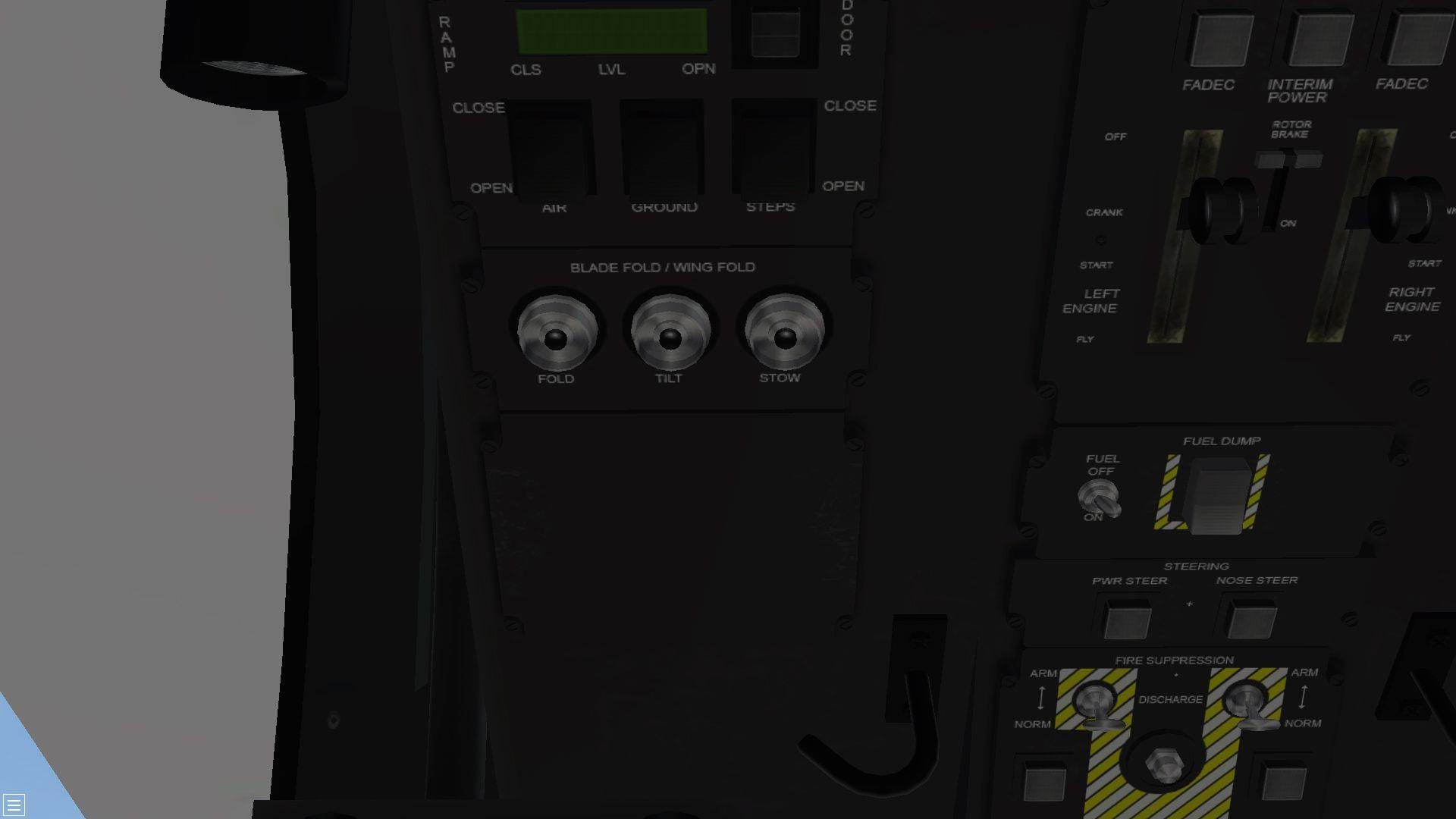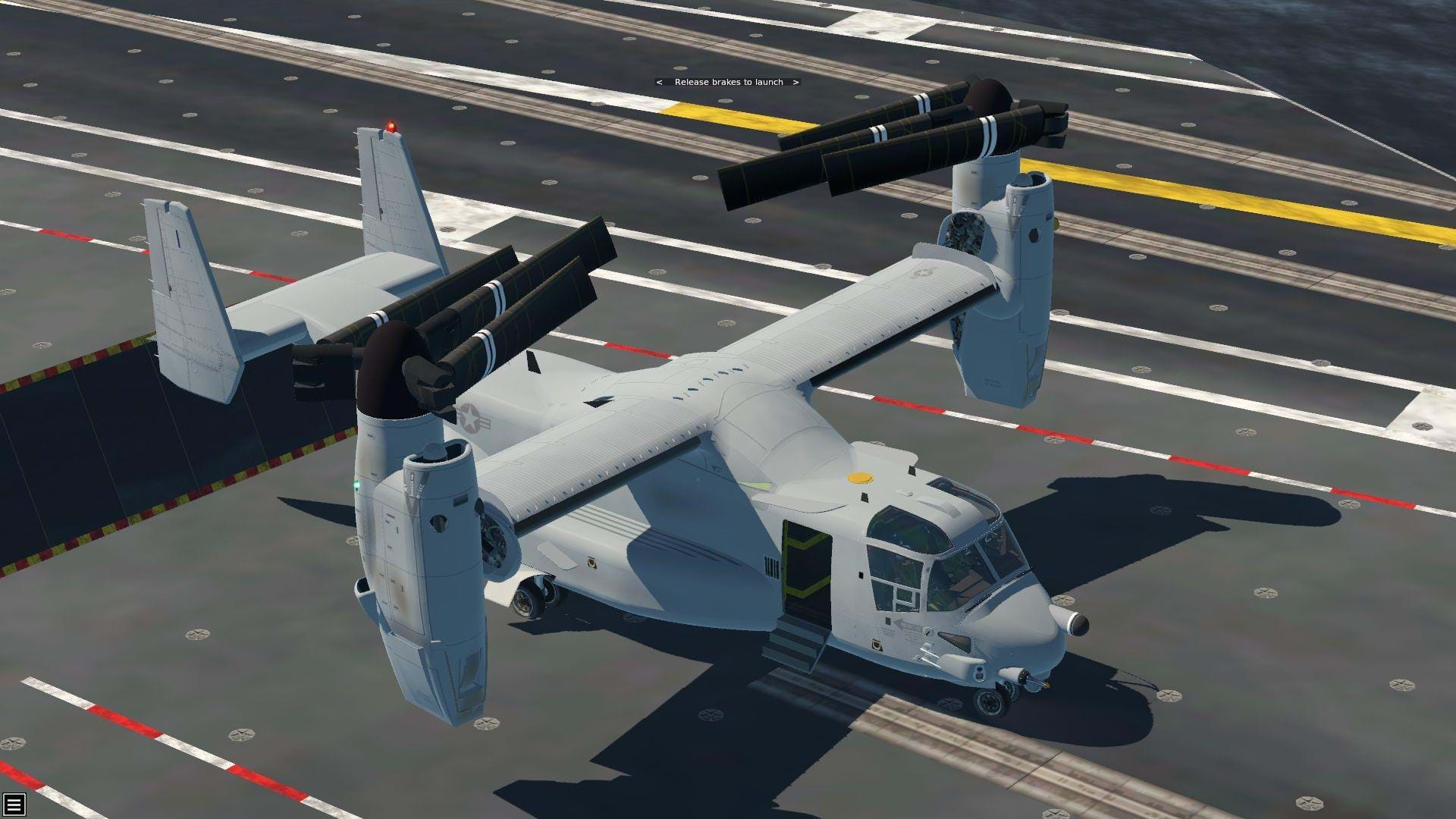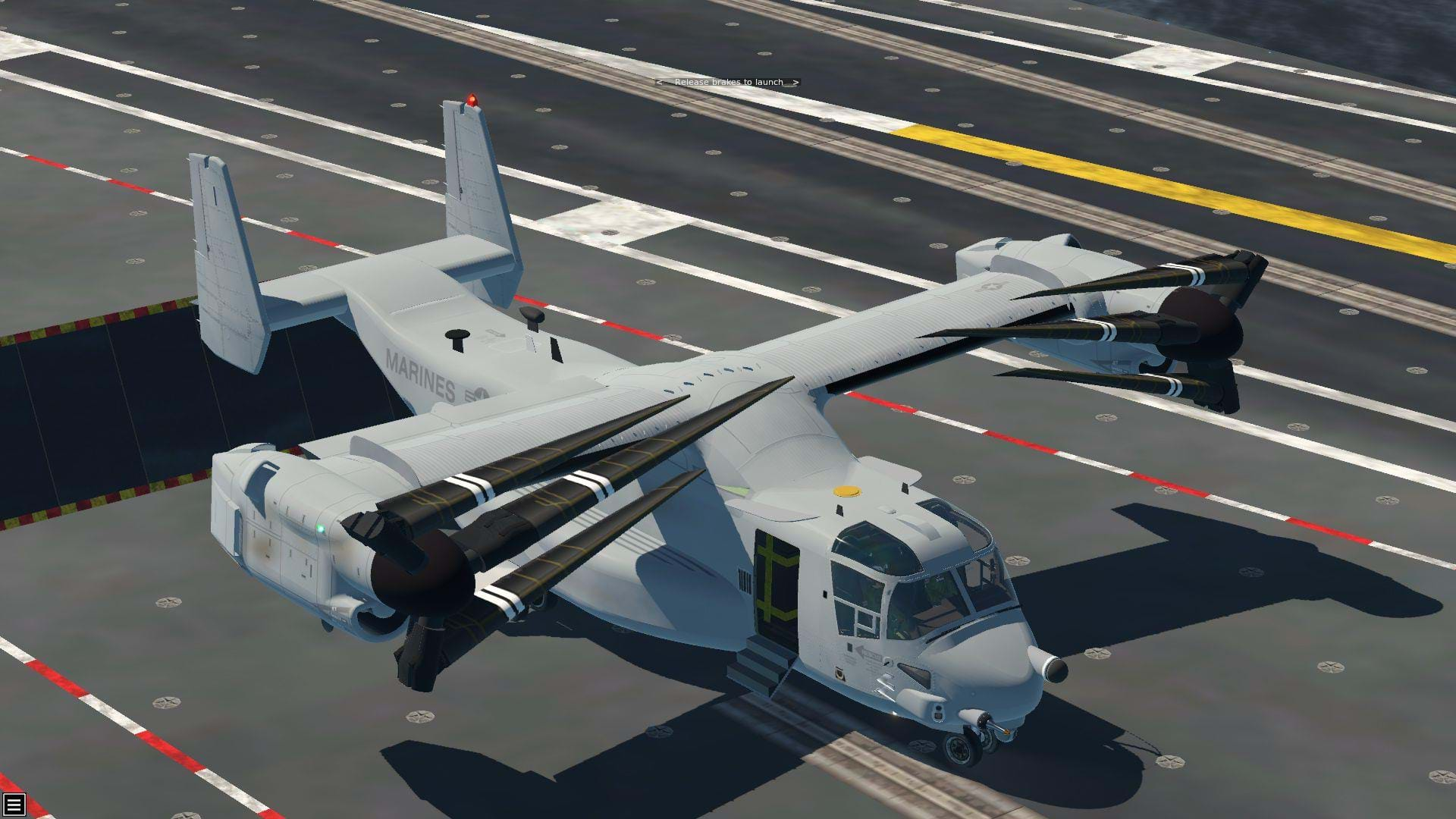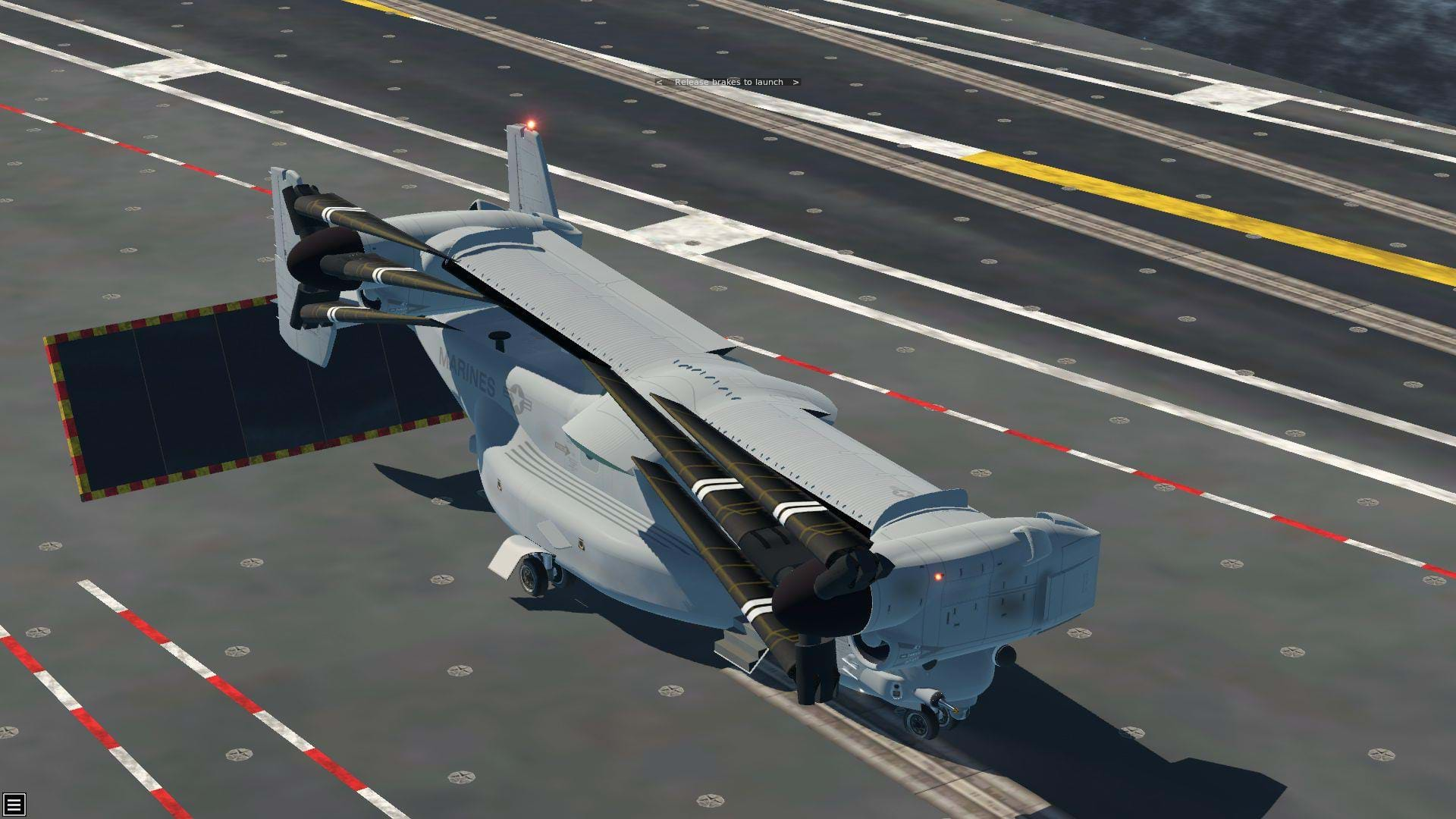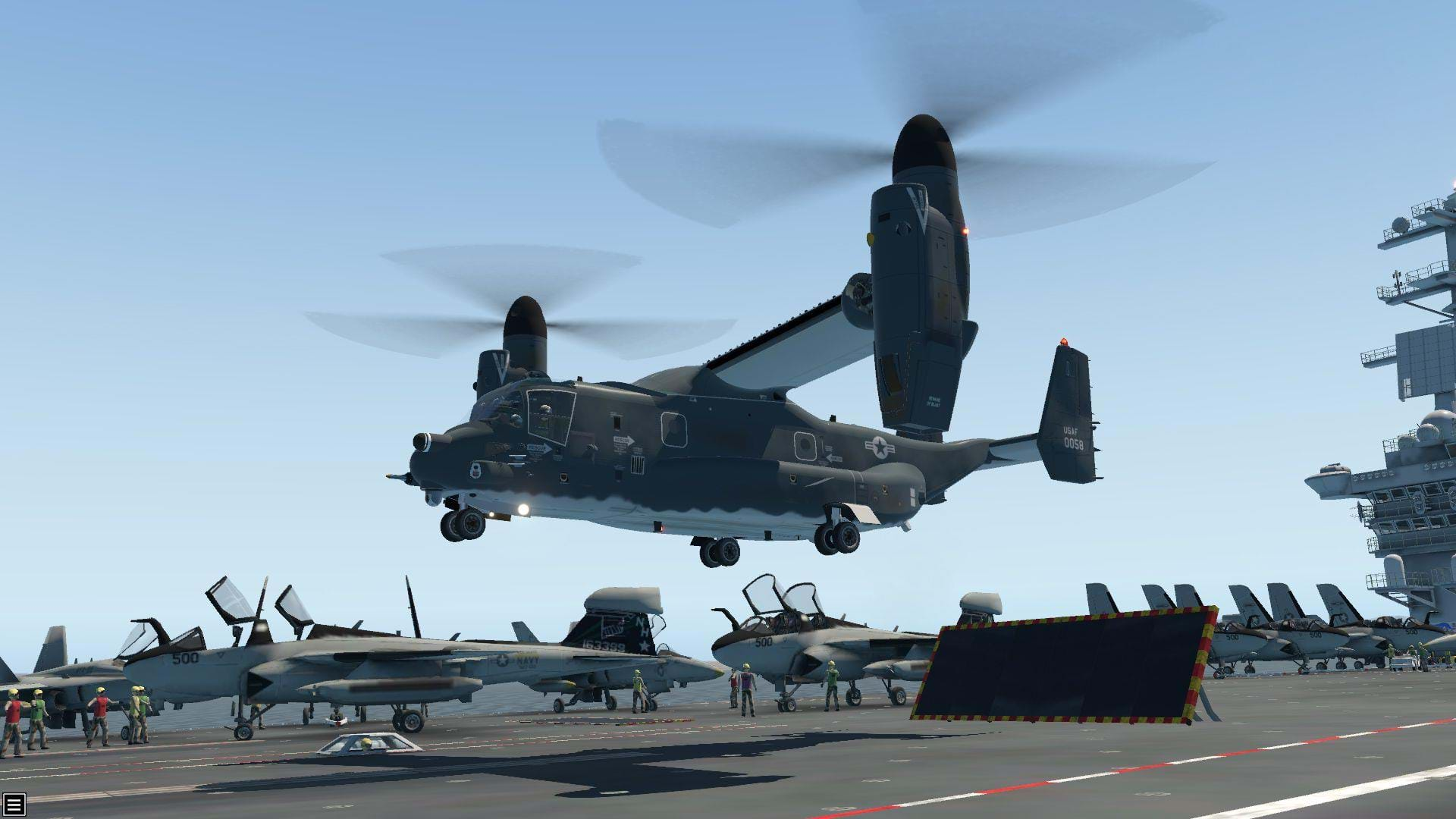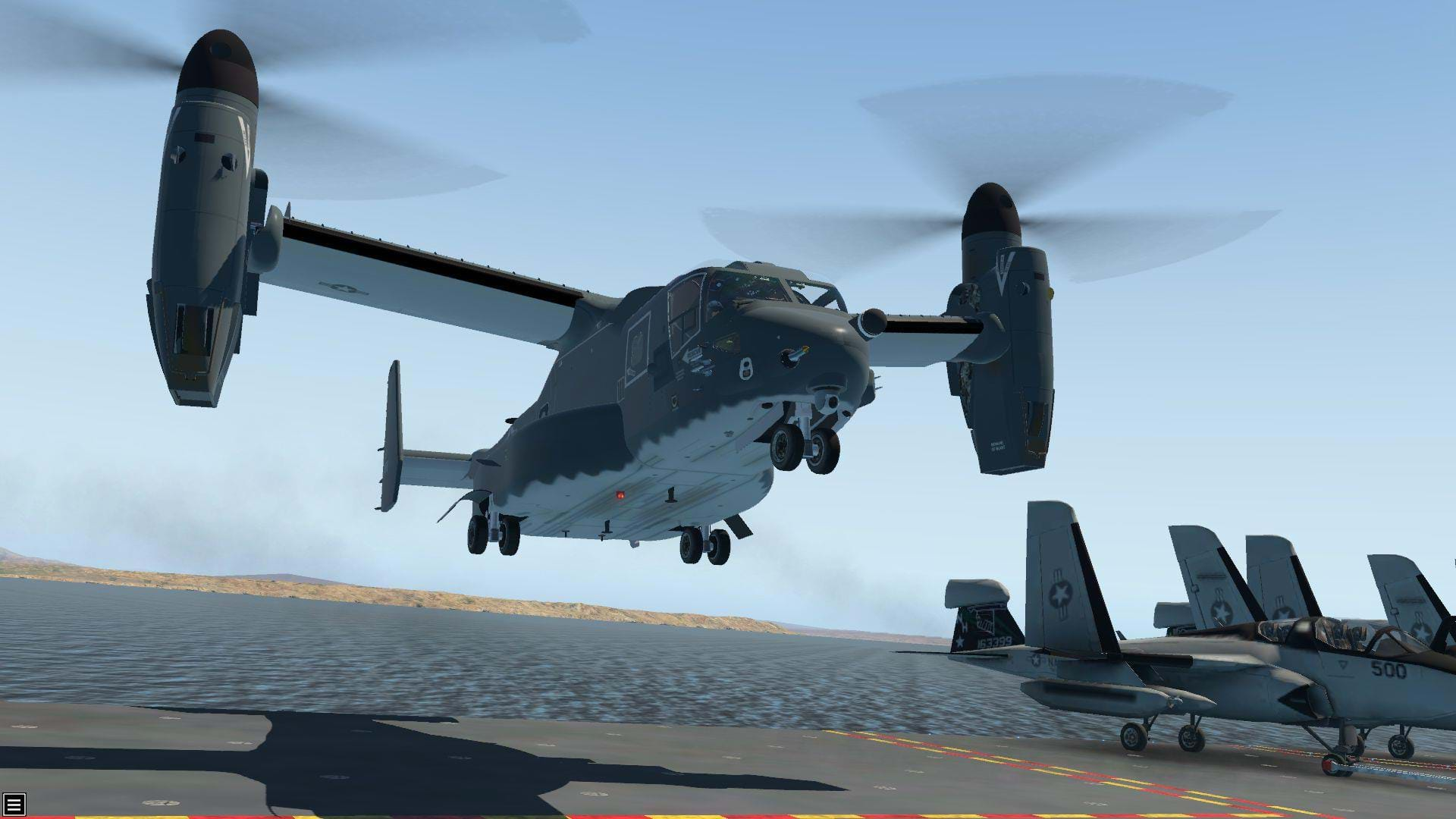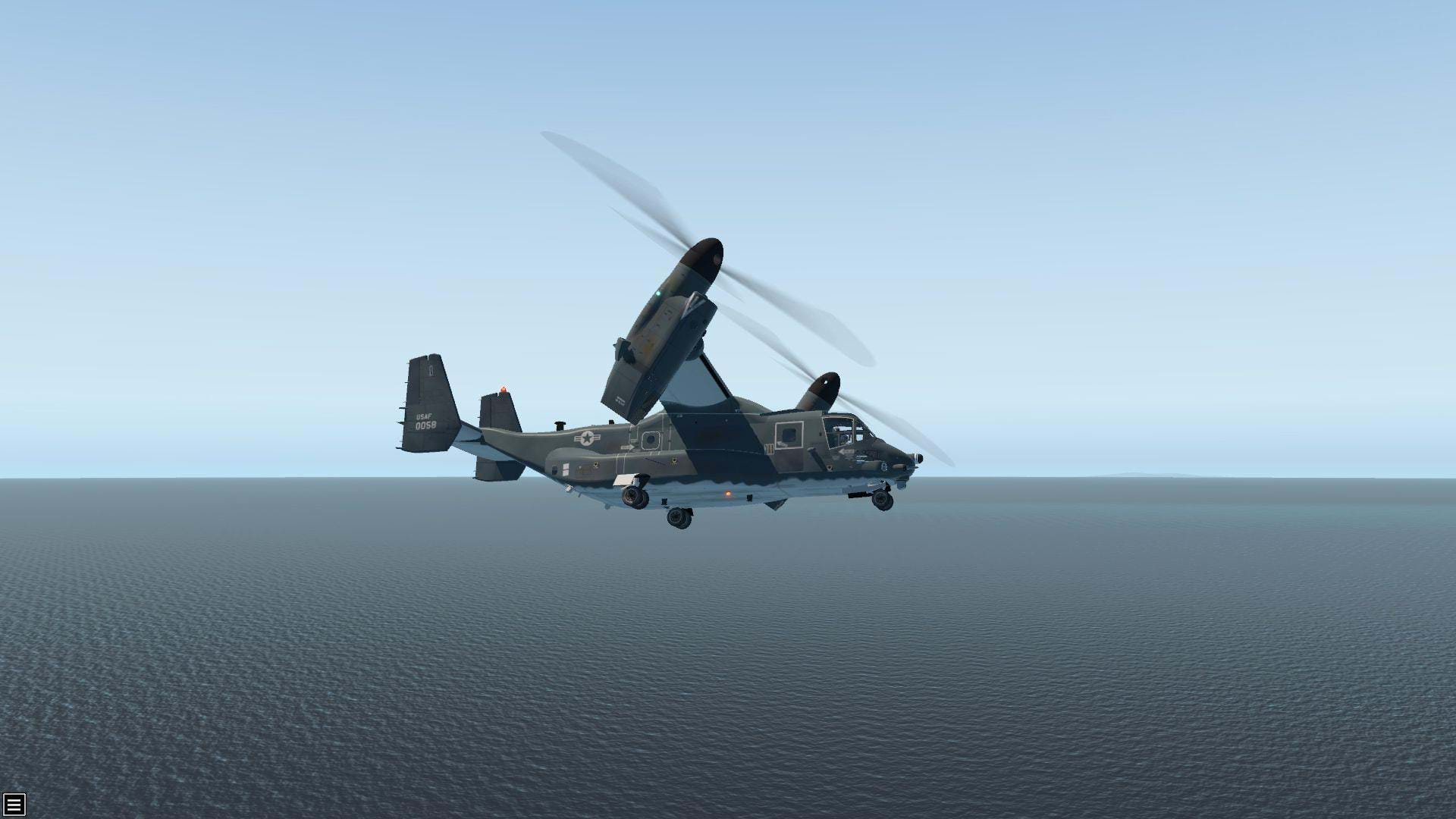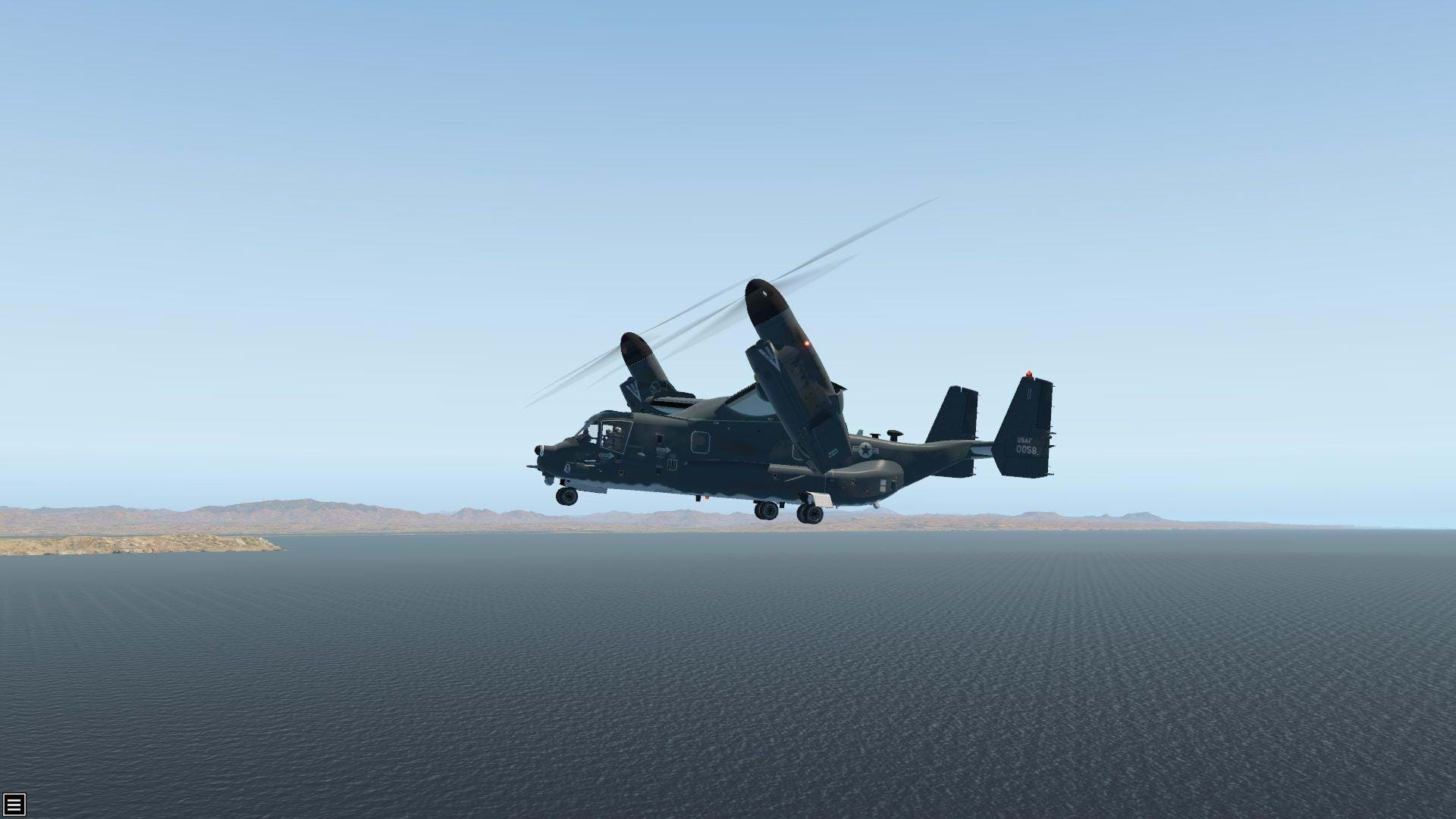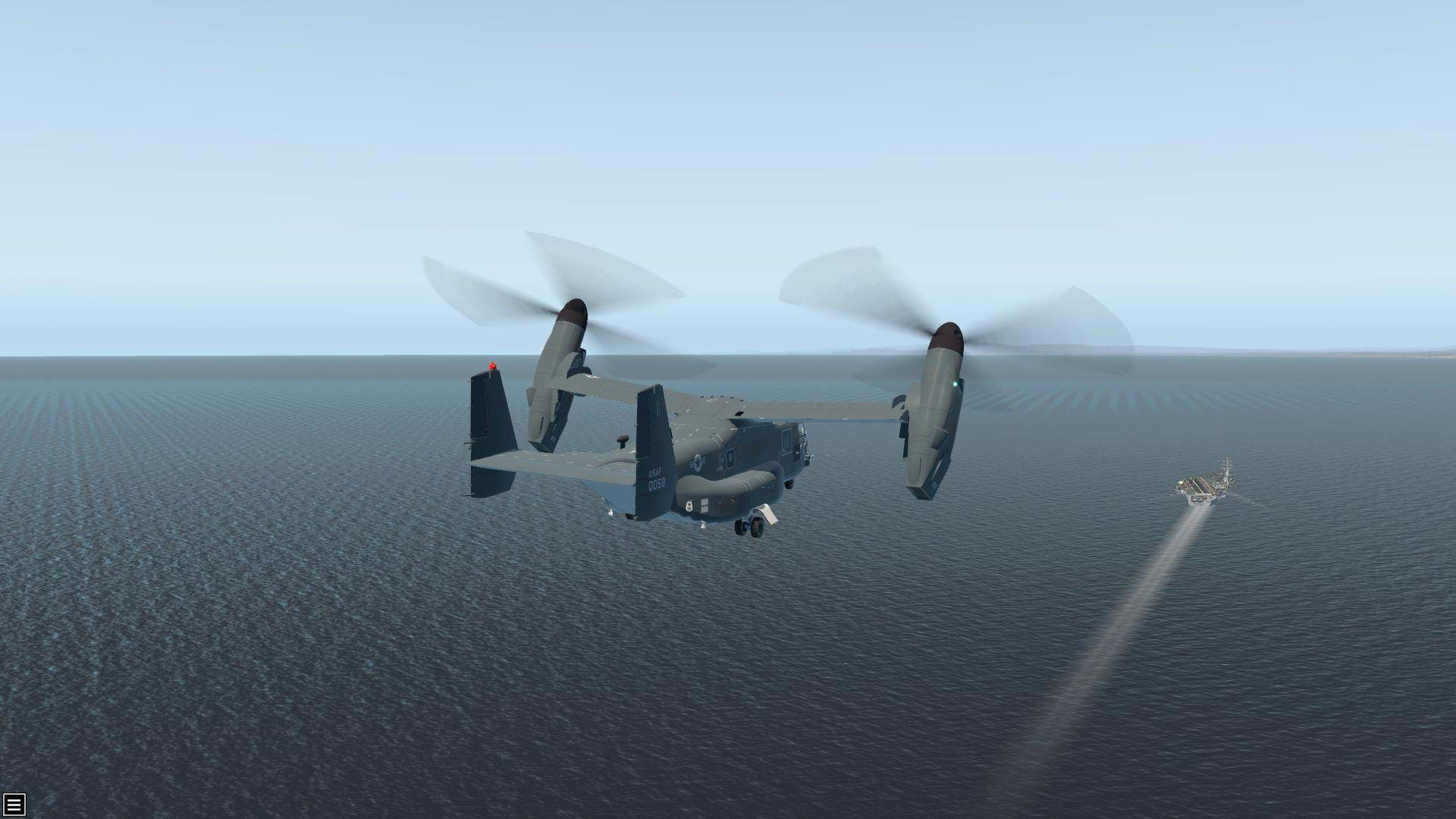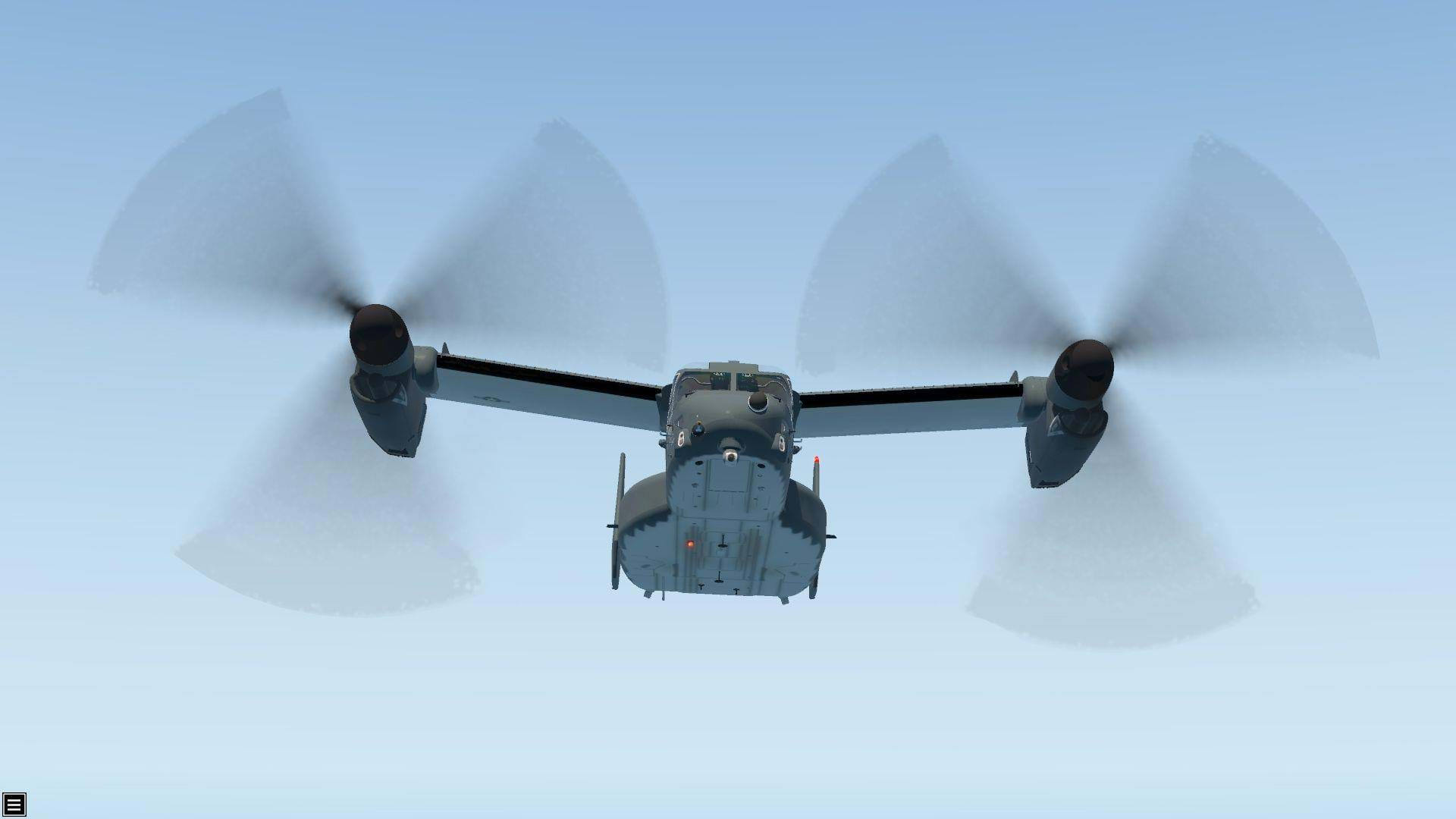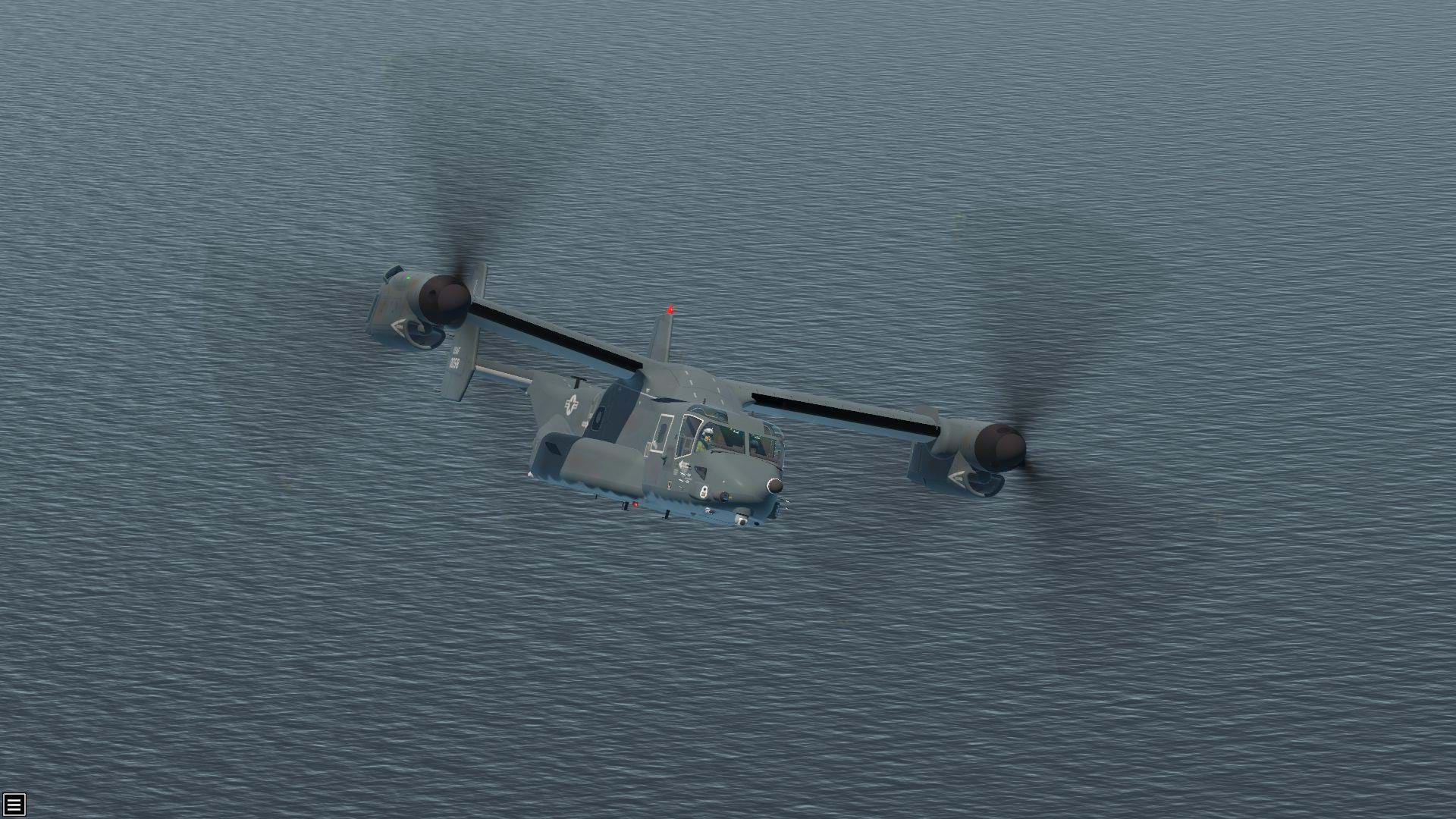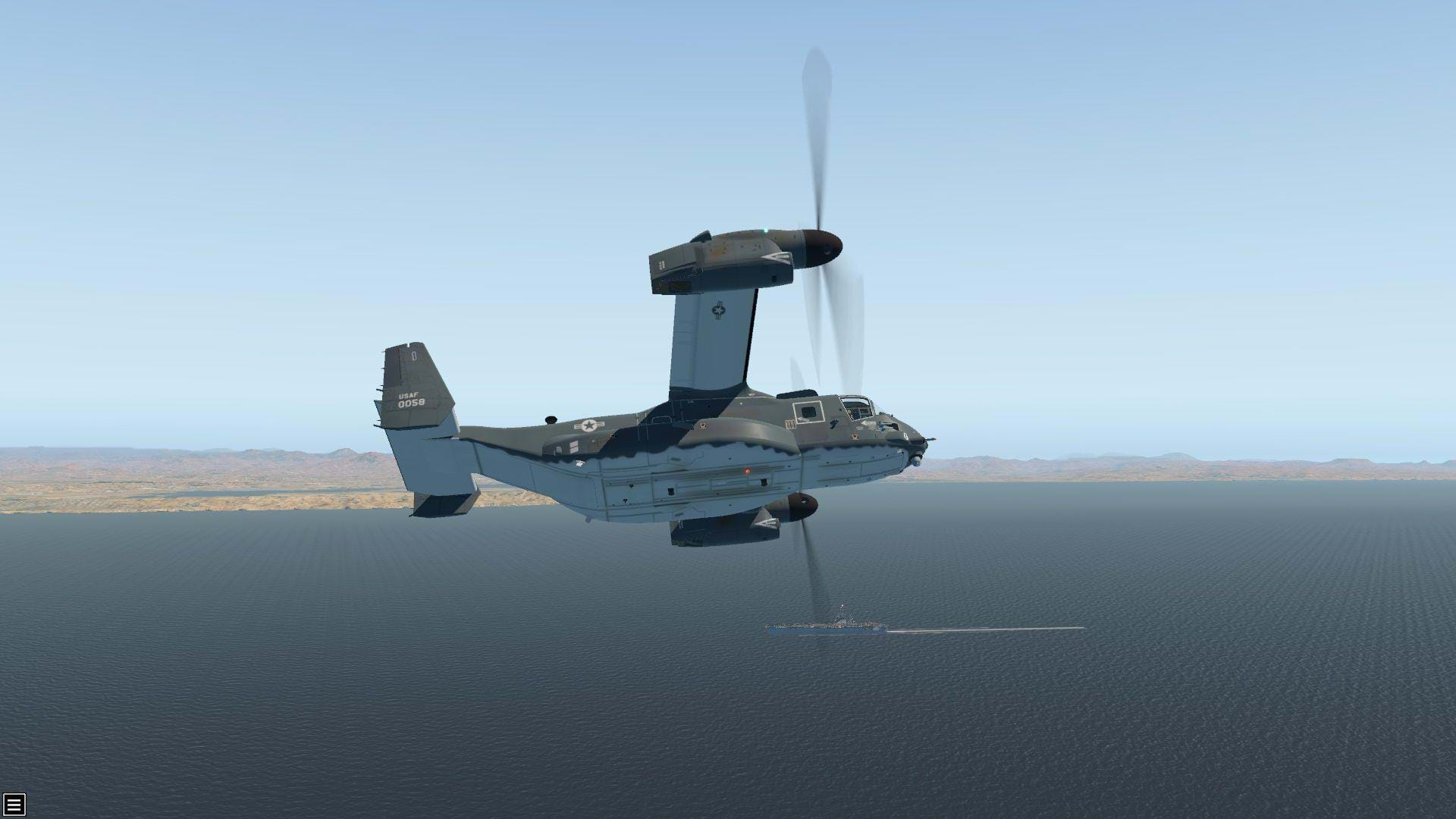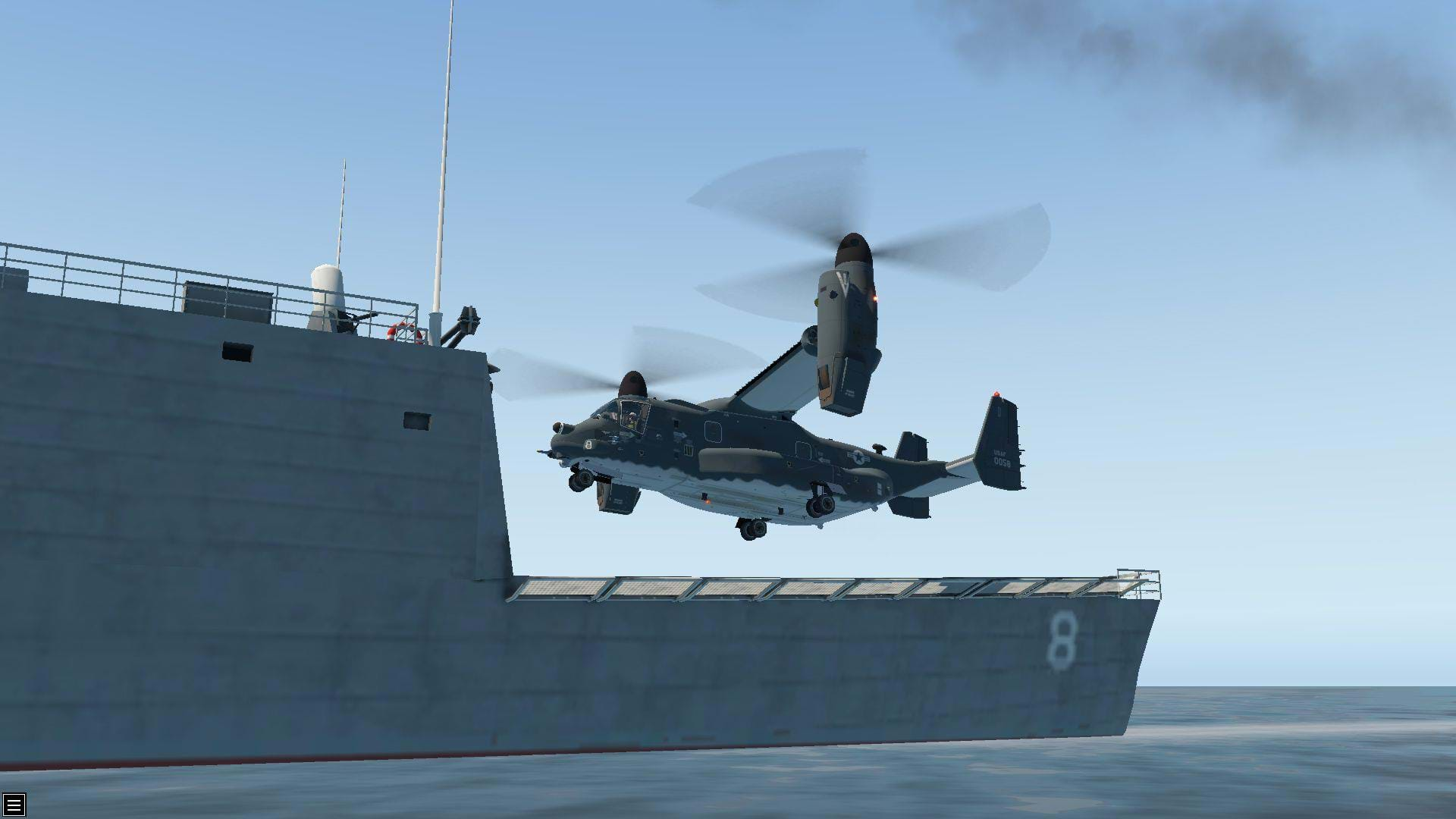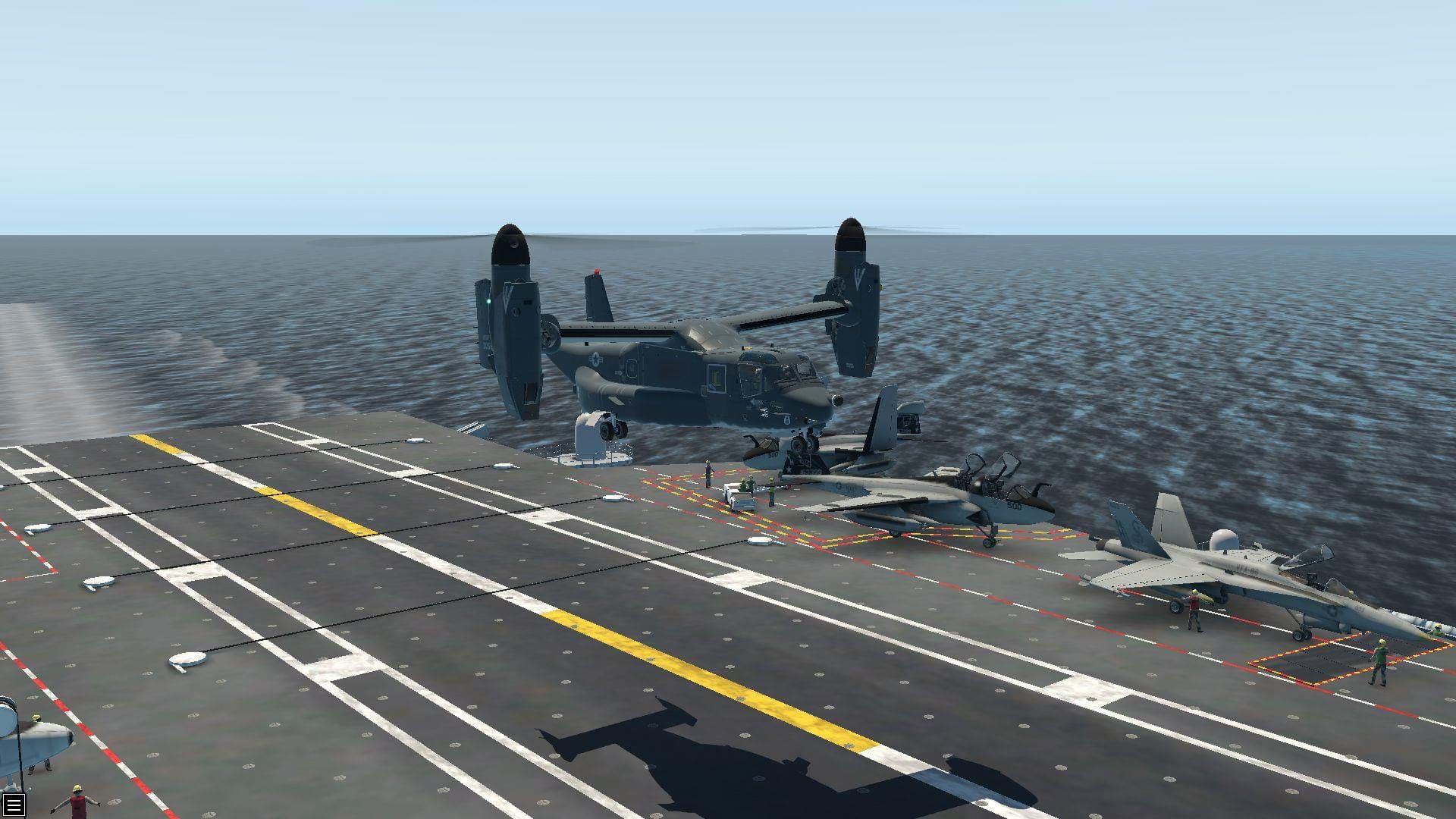The V-22 is an Aircraft whose development has lasted what seems like a lifetime. Well, to me at least because the Joint Vertical-landing Experimental (JVX) program that became the V-22 started about the same time I was born!
The V-22 program has been controversial to say the least. Development issues, as well as some high-profile crashes had dogged to program from day one. But these types of things can be expected when you’re developing technology.
There have been a few V-22’s depicted in flight sims over the years. In the early versions of X-plane it was included as a default model. Payware models started to appear for Microsoft Flight simulator 2004 ACOF. Now, we have one for X-plane 11. So, let’s have a look.
Is it a Rotorcraft, or an Airplane?
Short answer: no, it isn’t either of those. There have been plenty of arguments about what the V-22 actually is. Some have argued that it’s a compound helicopter, which might sound like a correct answer but still technically inaccurate.
In the early to mid-1990’s it became apparent that Bell helicopter was going to apply their tilt rotor technology to the civilian market, as a joint venture with Agusta/Westland. It’s one thing for military pilots and test pilots to fly around in wacky contraptions, but if civilians were going to do it, they would have to have a pilots’ certificate. So, which one? Rotorcraft? Airplane? Both? Well, the answer turned out to be a new category altogether. This new aircraft category is called Powered Lift.
A powered lift aircraft as defined by 14 CFR 1.1 is as follows
Powered-lift means a heavier-than-air aircraft capable of vertical takeoff, vertical landing, and low speed flight that depends principally on engine-driven lift devices or engine thrust for lift during these flight regimes and on nonrotating airfoil(s) for lift during horizontal flight.
This definition describes the V-22, it’s predecessors and future tilt-rotor aircraft pretty well. The majority of the V-22’s mission profile is spent in the Airplane mode where the prop-rotors are providing the majority of the thrust, while the wings they’re mounted to (the non-rotating airfoils) provide the majority of the lift.
So, even though the V-22 looks sort of helicopter-ish and behaves like a helicopter in certain regimes of flight, technically it isn’t one. The first aviators to earn a Pilots certificate in the Powered lift category were Bell/Boeing V-22 test pilots in 1997.
First Look
The AOA V-22 is a unique aircraft, just like it’s real world counterpart. As unique as it is, this isn’t the V-22’s first appearance in X-plane.
Previous versions of this simulator platform have had the V-22, which makes a lot of sense. X-planes permissive physics environment is perfect for such a complex and unique aircraft like a tilt rotor. However in the past, the V-22 in X-plane was a default aircraft, that was one of those “neat to fly” options after a flight in one of the more conventional airframes.
There wasn’t much detail in the visual model and in the case of the X-plane 8 version, it wasn’t exactly the most accurate. But now, thanks to AOA we have a more modern version of the V-22.
Personally, I didn’t find the visual model to be as good as some of the other developers. Thanks to DreamFoil and X-Trident, the bar is set pretty high. This doesn’t mean that this isn’t a good model, but it’s not as detailed as some of the others on the market.
The V-22 is a much more complex airframe than other Bell or Boeing products like the 412, So it might make sense that AOA wouldn’t add to the polygon count by modeling all of the hoses, gears, tubes, plugs and other devices in the engine nacelles. In the case of the engine Nacelles, and some other areas of the model, the details are only painted on with the textures.
This works for the most part. But some of the painted-on details tend to detract from the visual quality of the model. More extensive modeling on components like the tie down lugs, and the countermeasures dispenser would have really added to the visual accuracy of this model.
The biggest problem I had with the AOA V-22s visual model is the way the prop-rotors themselves are displayed when moving at high RPM. In person, the V-22’s prop rotors are these giant, monstrous propellers with massive blades that are constantly and mercilessly slapping the s**t out of the air around them.
The AOA model looks OK from the front and back, but from the side, it looks like an empty disk reminiscent of early FSX models. When at operating RPM the prop spinners/rotor hub covers shows three large holes where the blades were. This lack of modeling is the most apparent in the cockpit when you look to either side, especially in VR.
This may not bother anyone else, but personally I would love to look out of my window and see those giant blades swinging around.
While the outside visual model leaves a bit to be desired, the modeling of the cockpit is pretty good! The crew station of the AOA V-22 looks very accurate. There were very few short cuts in the modeling of the crew stations.
The TCL is what replaces the collective in the V-22. It functions just like a regular airplane throttle in when in the Airplane mode. Push it forward, the aircraft goes faster, pull it back, the aircraft slows down. This is all well and good, but what happens when the aircraft is hovering?
This got me thinking about a conversation I had with a V-22 pilot a long time ago at Edwards Airforce Base. This was prior to V-22 entering full scale production. He was an experienced helicopter pilot prior to joining the Osprey program. One of the key things that stood out to me was the “Collective Dyslexia” he experienced during training.
Helicopter pilots naturally want to pull up or up and back in an arc like motion (like the Bell 222 or 214ST) to lift the aircraft off of the ground. At the time, the pilot I spoke with estimated that about half of the V-22 pilots in the program were helicopter guys, the other half came from the fixed wing side. I have no idea how true that is, that’s just what he told me.
Pushing forward on the TCL was a really odd feeling for him, and it took a while before it became natural. I had not thought about that conversation in many years that is until I loaded this model into X-plane. More on that topic later.
The cargo bay area of the AOA V-22 is done pretty well, there’s more of the painted on style details, but you do get what looks like two extended range fuel kits, or some other type of cargo strapped down in the cargo hold.
Sounds
If you’ve ever heard a V-22 in real life, it’s a very unique sound that will catch your ear from a good distance. The first time I heard one was in 2008 while in Iraq. It was almost as if a Beechcraft King Air had gotten angry and turned into some sort of Airplane like incredible hulk with pneumatic jackhammers in each hand. Now I admit, that may be a bit dramatic, but that’s what I was thinking as the items on the table in the room began to rattle.
Since then, I’ve seen and heard V-22’s in a much less dramatic fashion. But I always notice that the prop-rotors of the V-22 have a very percussive sound while hovering. It’s more rapid and staccato than the whoop-whoop, of a UH-1, or the swooshy sound of a CH-47. I’m guessing this is due to the higher operating RPM, and the relatively wide chord of the blade.
The AOA V-22 doesn’t quite capture that sound when operating in the helicopter mode. The sound has more of a droning pulsing type repetition to it that I have not heard from any of the V-22’s I have seen/heard in person. This all sort of smoothes out when you transition to airplane mode, and sound a little more realistic.
Systems
Now, lets get this out of the way, upfront. I have no idea if the systems on this model are accurate. No way for me to tell. I’ve never flown a V-22, nor do I know anyone who has. I can (as usual) make a few educated guesses on how things work, and see if they make sense or not.
The AOA V-22 is hilariously simple to start up from a cold and dark state. I was able to figure it out without using the manual the first time after loading it in the sim. That’s not because I’m super smart, it’s just because I’ve started a dual powerplant high performance aircraft once or twice in my life time. And they all have a similar start up flow, that goes something like this
- Battery - On
- APU- On
- Avionics and other Systems -On and check
- Engine(s) -Start
- APU- off
The AOA V-22 pretty much follows that same rational. Is it that simple in the actual aircraft? Maybe, I don’t know. But I imagine it’s pretty close, with the exception of the avionics and other miscellaneous systems part.
That probably has a lot more steps to verify the proper operation of each of the critical flight systems, and other avionics components. I was very pleased to see the APU modeled. It is not often in a flight sim model that you get to turn on an APU in any sort of aircraft that takes off vertically.
The AOA V-22 also features an impressive recreation of the automated folding function of the real V-22. This is easily accomplished with a few buttons on the overhead panel.
Flight Dynamics
I have no idea how a real-life V-22 is supposed to. The V-22 is so unique, it would be a challenge for me to guess at the accuracy of the AOA model. But, I’m going to do it anyway because Sergio asked me to.
To get the best experience, I plugged in my old Saitek X-52 throttle to use alongside my Pro-Flight Trainer Puma. This more closely resembled the Thrust Control Lever of the V-22. But, in order to do this, I had to re assign my throttle axis from my puma to the Saitek.
The new Joystick profiles featured in the lasted version of X-plane 11 could potentially make this a lot easier, but I haven’t fully explored that feature yet. I also tested this model by just using the twist grip on my Pro-Flight Puma, which was also adequate, but it won’t be the same control movements that a V-22 pilot would use.
If you are not using a full helicopter set up, this model will work just fine on a desktop HOTAS style set up. One thing I would recommend before starting is to set the throttle axis back to an airplane style “forward = increase thrust” if you previously had it as “pull back = helicopter goes up” setting.
When it comes to cyclic input, hovering the AOA V-22 is not much different than any other large helicopter. According to the Boeing website, the V-22 has a Max vertical takeoff weight of 52,600lbs. (23,800kg) even though that is probably not it’s normal mission weight, and it’s likely that the engines/transmissions are operating in a transient limitation that’s a heavy machine! So, the cyclic response isn’t going to be super snappy like the Bell 407.
For this review, I did all of my testing at 45,000lbs, which is still a heavy machine to work with. That being said, the AOA V-22 is a very stable hovering platform. Which I imagine the real V-22 would be as well, given the airframes size, and whatever automated flight control systems it may have installed.
Pedal input isn’t much different than I was used to either. There’s no pedal input required to counter torque, which makes sense, because the two prop rotors are mounted far outboard of the aircrafts center line and they also spin in opposite directions. In all reality, this may not be such a bad model for a beginner to helicopter flying, especially one who has a lot of fixed wing sim time.
Hovering the AOA V-22 feels “normal”, with the exception of the TCL input. Applying take off power with the TCL (my throttle) is a completely different feeling for me.
The initial pick up to a hover was just fine, push throttle forward, aircraft goes up, easy! But when it came to making small instinctive corrections, that’s when I first experienced the “Collective Dyslexia” that was described to me years ago.
My left arm naturally wanted to pull back to get the aircraft to stop a descent, which is exactly the opposite of what’s required, which can be as hilarious as it is frustrating. It became a lot easier when I started thinking of it like an RC helicopter, which has a similar forward = up set up. because of this, it was much easier for me to get the hang of the TCL using the X-52 throttle that it was using the twist grip, but by the end of testing for this review, I was somewhat proficient with both. It’s really just a matter of practice.
Hover to Forward Flight
The transition from hovering flight, to fast forward flight is actually pretty straight forward. To accomplish this, I mapped the vector sweep forward and aft commands to my X-52 throttle, and the two red Buttons on my PFT collective. This is essential when you’re changing the position of the engine nacelles manually. One thing that does get your attention is the noticeable pitch changes of the fuselage when rotating the nacelles forward.
The fuselage has a tendency to want to remain perpendicular to the nacelles during rotation. This caused the nose of the aircraft to lurch forward which was pretty alarming the first time. As long as you counter it with aft cyclic (or whatever it’s called in the V-22) the transition forward flight is relatively simple.
As the nacelles get to 0 degrees, you’ll notice there is a automatic reduction in power applied to the prop-rotors. This is probably because the airframe is much more efficient when operating as an airplane than it is a helicopter, so you don’t need to maintain hover power in forward flight.
Once the transition is complete, the V-22 pretty much flies like a large twin turboprop (I’m assuming, I’ve never flown a large twin turboprop). Acceleration through 200 knots comes very quickly, and the model cruses very nicely. In this mode of flight, the autopilot and navigation equipment are very useful, especially on long cross-country flights, or long over water flights.
The Safest Hands are Your Own
Transitioning back to helicopter mode takes a little bit more care and attention. Power management is key, and the included manual has some interesting tips. But it’s was by far the most difficult thing to learn to do with this model.
The AOA V-22 features a Nacelle Auto mode which I got some mixed (mostly bad) results from using. The Auto mode can be selected from the center console with just the click of one button. However, I’ve yet to complete a successful landing using the Auto mode.
The included manual has a pretty good description of the parameters in which auto mode will function, however, I believe due to some limitations within X-plane, that this functionality falls short of the developers’ expectations.
At first using auto-mode works just fine, as the aircraft slows, the nacelles begin to transition to a more vertical position. After that, things get a little crazy. The nose tents to pitch up wildly, which causes your airspeed rapidly decay to the point where the wings have stalled. This, in turn, creates a rate of decent that will cause the pilot (me) to instinctively add a whole arm load of power. When this happens, for some reason, the nacelles transition back to horizontal along with the associated automatic reduction of power I mentioned earlier.
So, you’re left with a high rate of decent, stalled wings, and prop-rotors that have insufficient power to hover. I was able to recover from this a few times with a ridiculous about of altitude, but the majority of my Auto hover transitions ended with the flight being reset.
This resulted in me abandoning the Auto mode for rotating the engines. Manual worked much better. There is still a lot of practice needed to get it right, but when it comes to transitioning from forward flight back to a hover, the best way to do it is manually.
Landing
One of the hardest parts of landing the AOA V-22 is power management and maintaining a constant approach angle.
It is very easy to develop a high rate of decent which in turn can lead to vortex ring state and the V-22 seems to be especially susceptible to it.
Two notable crashes of the V-22 have been attributed to VRS. In addition to this, the V-22s unique side by side pairing of its proprotors can cause a dramatic uncontrolled roll if one side has developed VRS and the other has not.
I found myself in the clutches of simulated VRS more than a few times while learning to land this model. One recovery technique I found after reading an article written by one of my favorite aerodynamicists states that simply rotating the nacelles forward will help expedite the VRS recovery. I got the chance to prove this technique works in X-plane several times.
Once back into hovering flight, landing can be a bit rough. I was able to maneuver the model over my intended point of touchdown with relative ease with the cyclic. However, in addition to my collective dyslexia, I found that small TCL inputs don’t always have the desired effect.
It took a while to get a feel for how much power was required for a smooth touchdown, or to simply stop an unintended climb, or decent. It’s really easy to overcontrol the TCL input.
Bottomline
There was a lot of enthusiasm about the AOA V-22 when it was released, and I totally understand why. It can be a lot of fun! It is by far, the most challenging model I’ve reviewed thus far. It’s a pain to learn but very rewarding once you get the hang of it. If you’re into Long cross country flights, the AOA V-22B might be a good model for you. It’s high cruse speed lets you cover a lot of ground far faster than any helicopter.
If you like fixed wing flight as much as you like rotorcraft, this model is going to bring you a lot of hours of enjoyment. You’re not exactly getting the best of both worlds, but it’s pretty darn close! But, for me as a “Helicopter guy” the very thing that makes this model unique is the very thing that will likely keep it from making very many appearances in my X-plane logbook. After transitioning to forward flight with the nacelles horizontal, it’s essentially an airplane, which to me is pretty boring. Don’t get me wrong, I’m not anti-Airplane. I love a good flight in my F-5E or P-51D in DCS, but I don’t spend a lot of time in fixed wing aircraft in X-plane. As a matter of fact, the AOA V-22 is all of the fixed wing flying I’ve done in X-plane 11 (I just checked!). So, with the exception of takeoffs and landings, I don’t get a lot out of the V-22.
Just because I’m some sort of helicopter purist, doesn’t mean others out there in the helicopter simulation community won’t be fans of the powered lift aircraft. In addition to that, this is the type of model that might be a gateway for fixed wing users to make their entry into the helicopter world and perhaps, in time, get a guy like me to fly fixed wing in X-plane.


